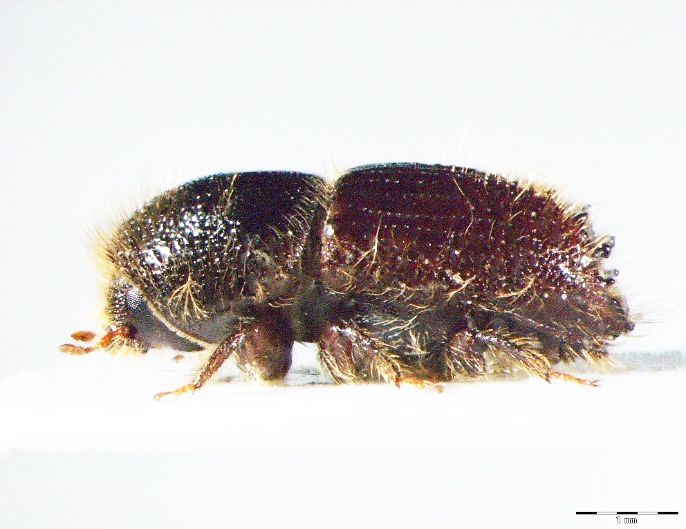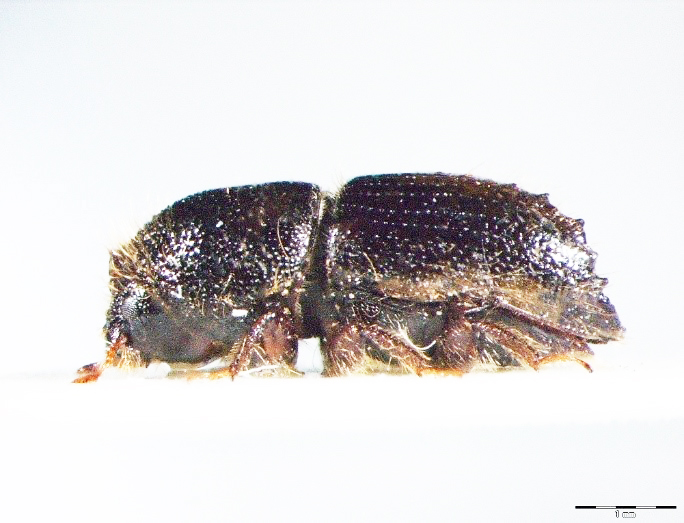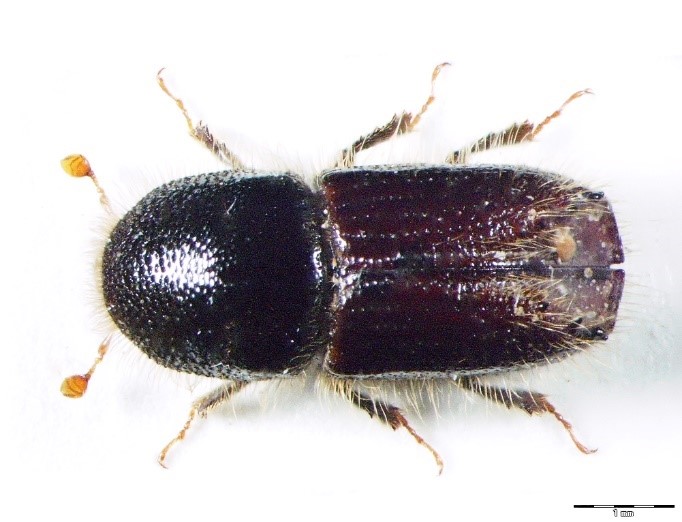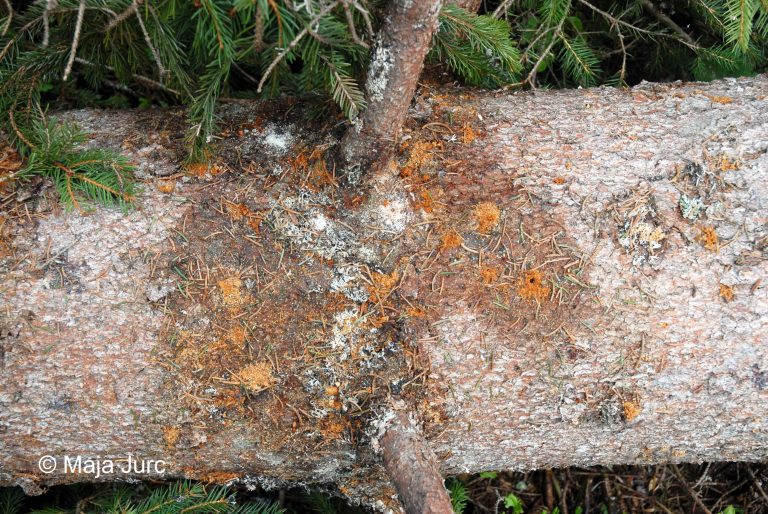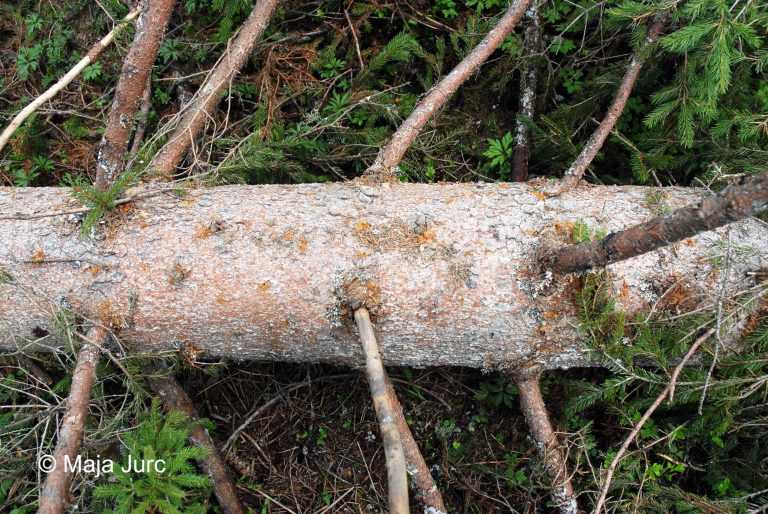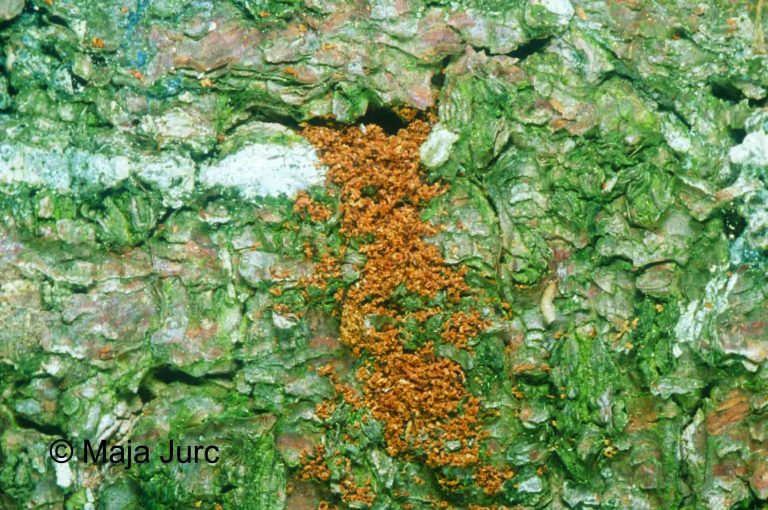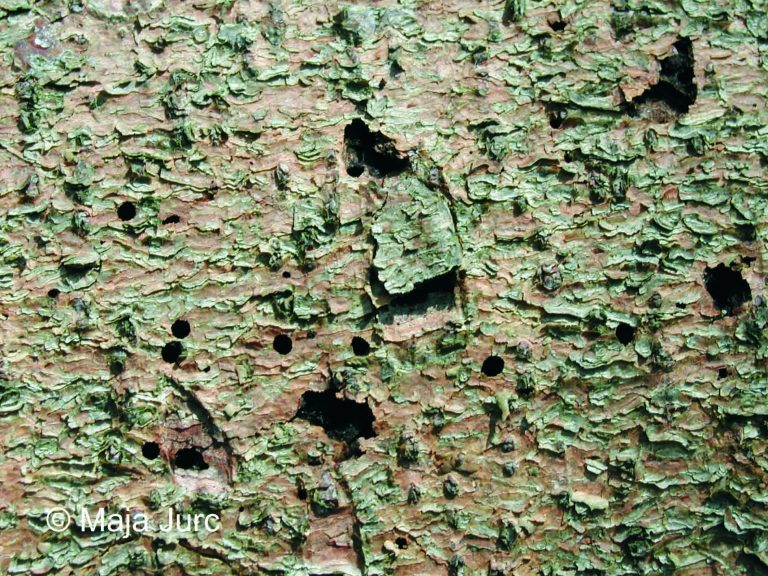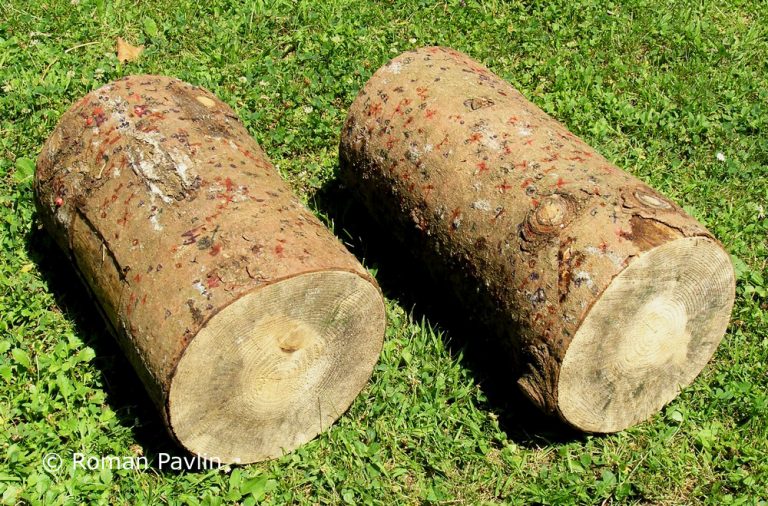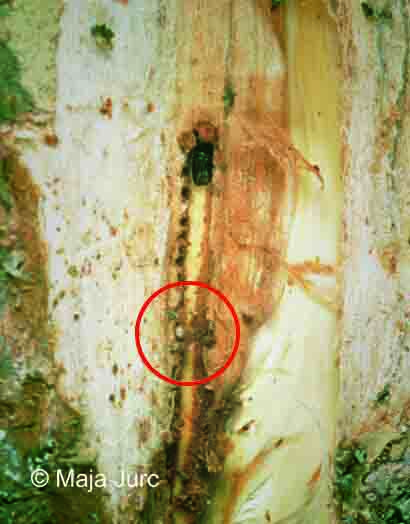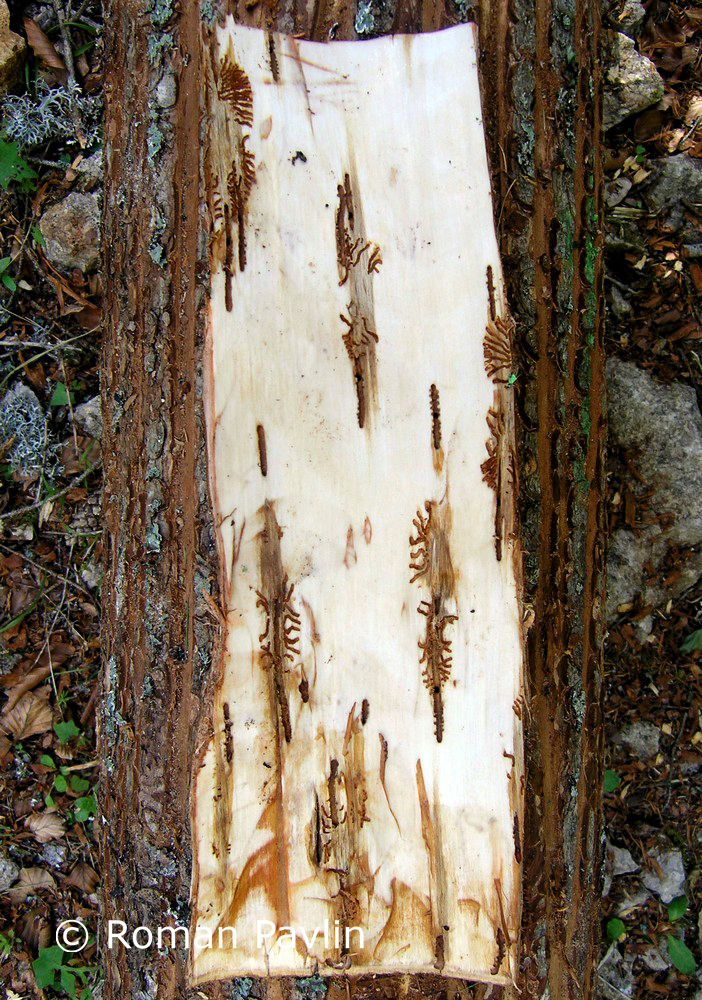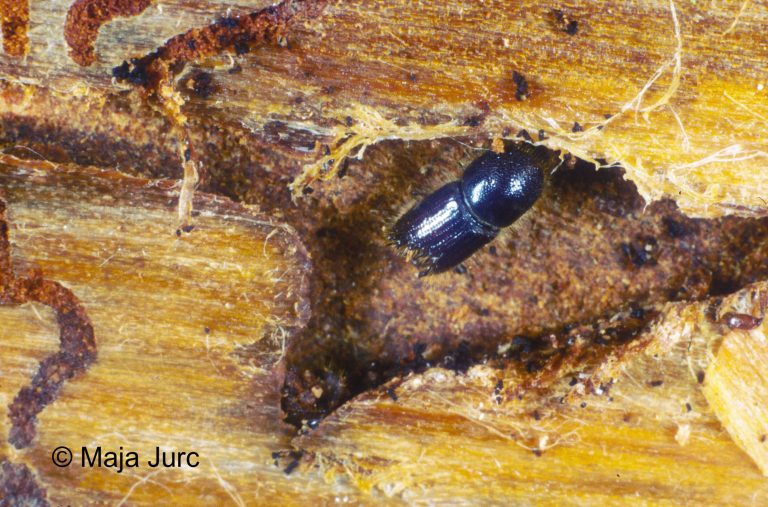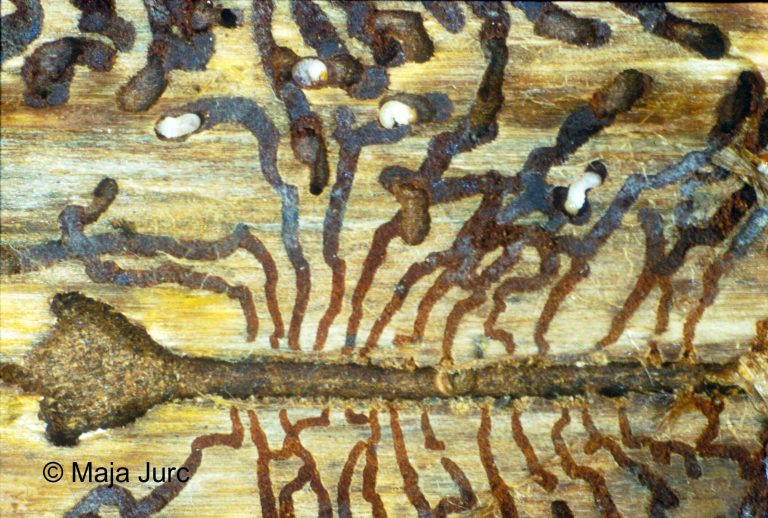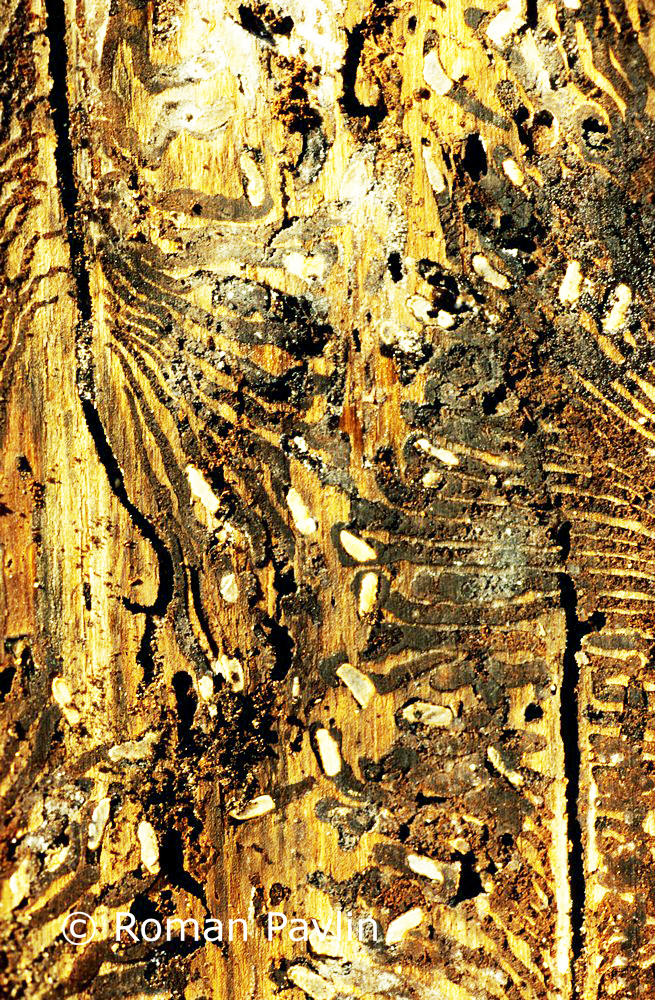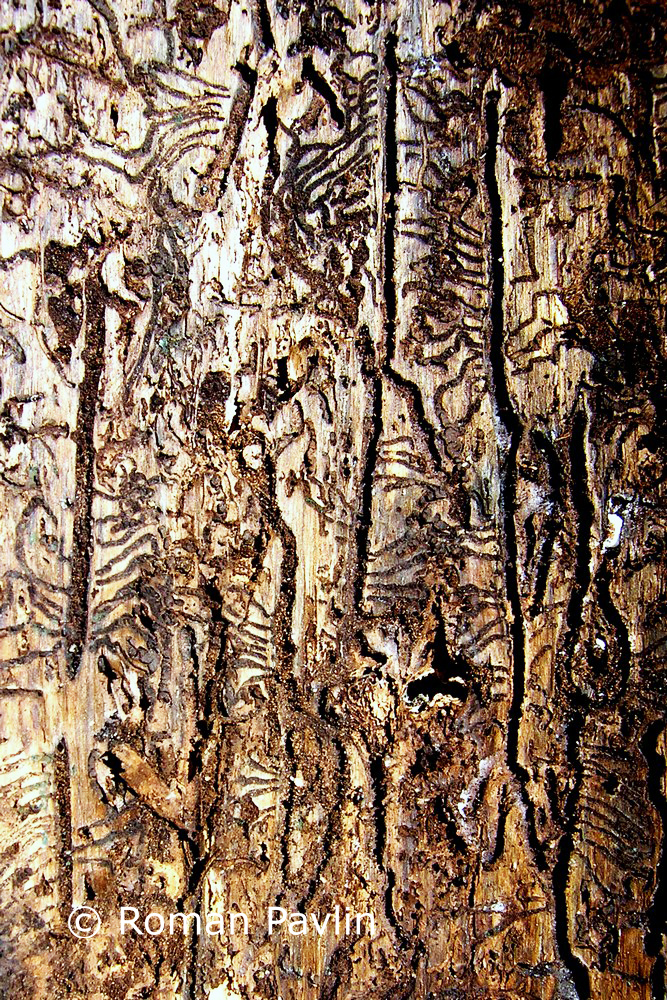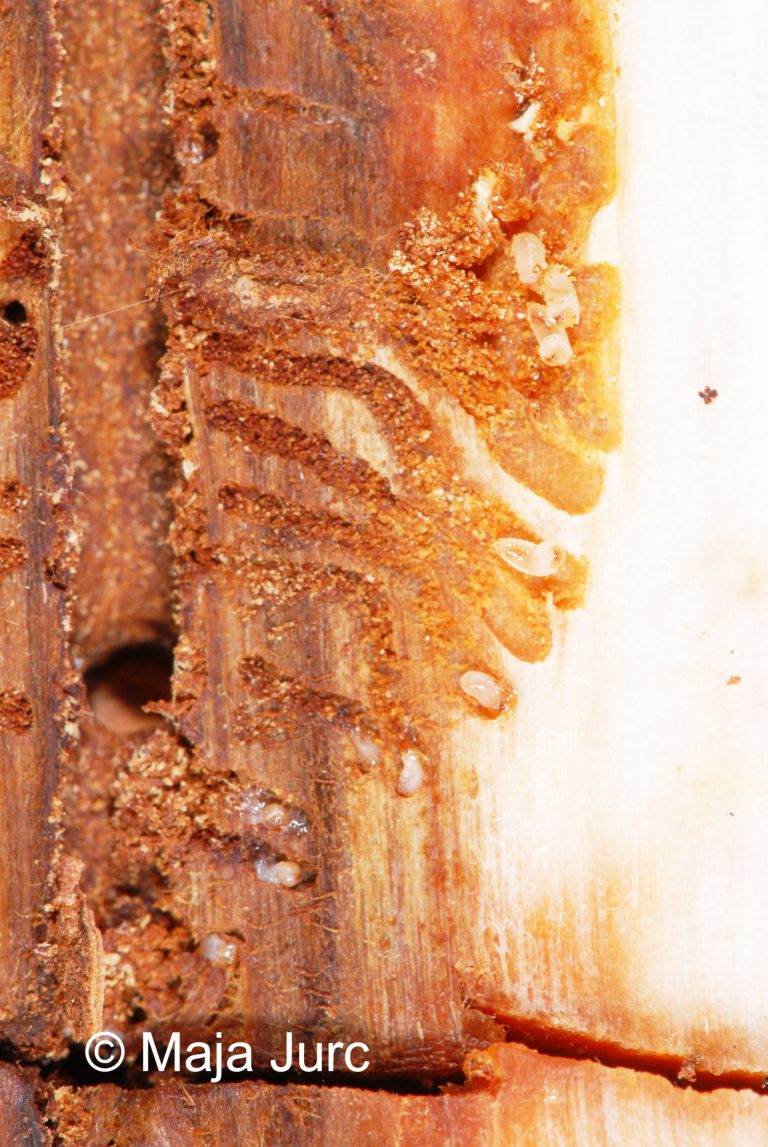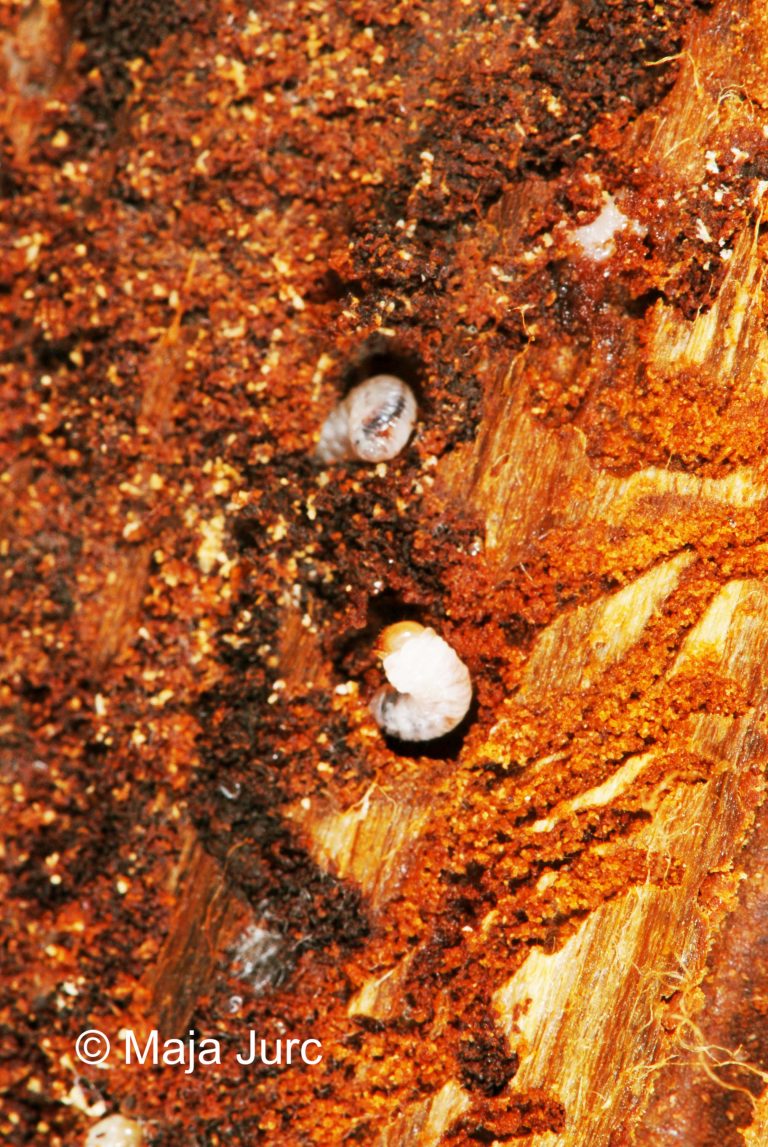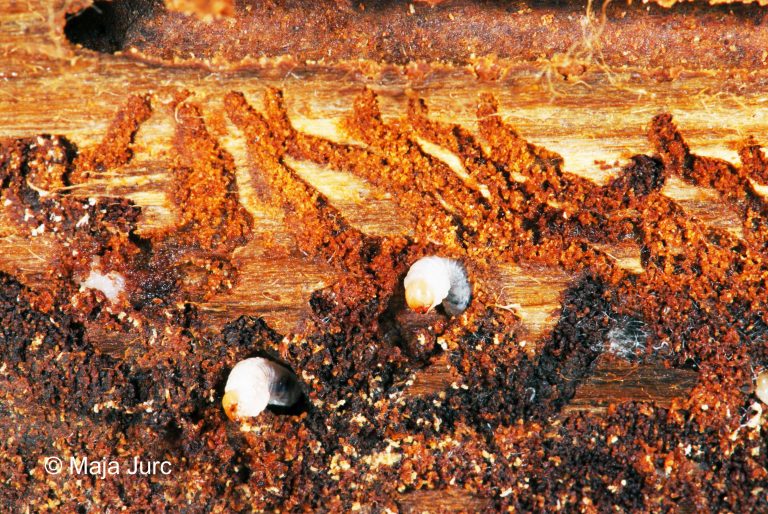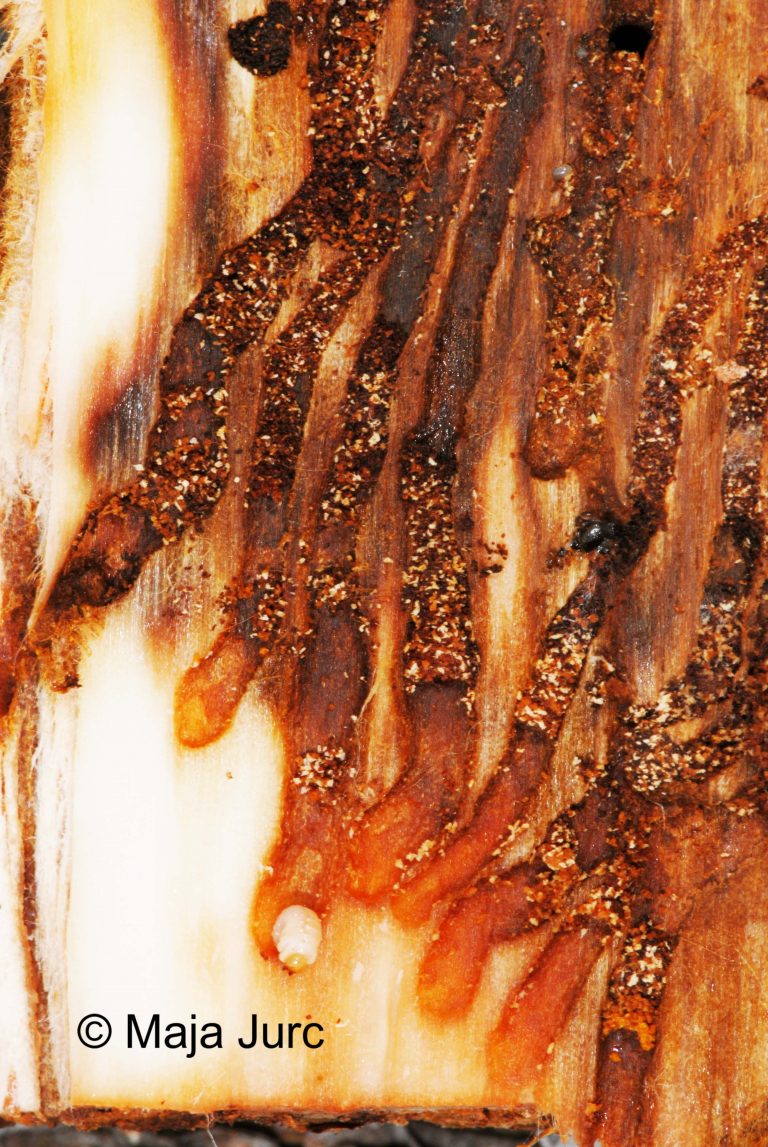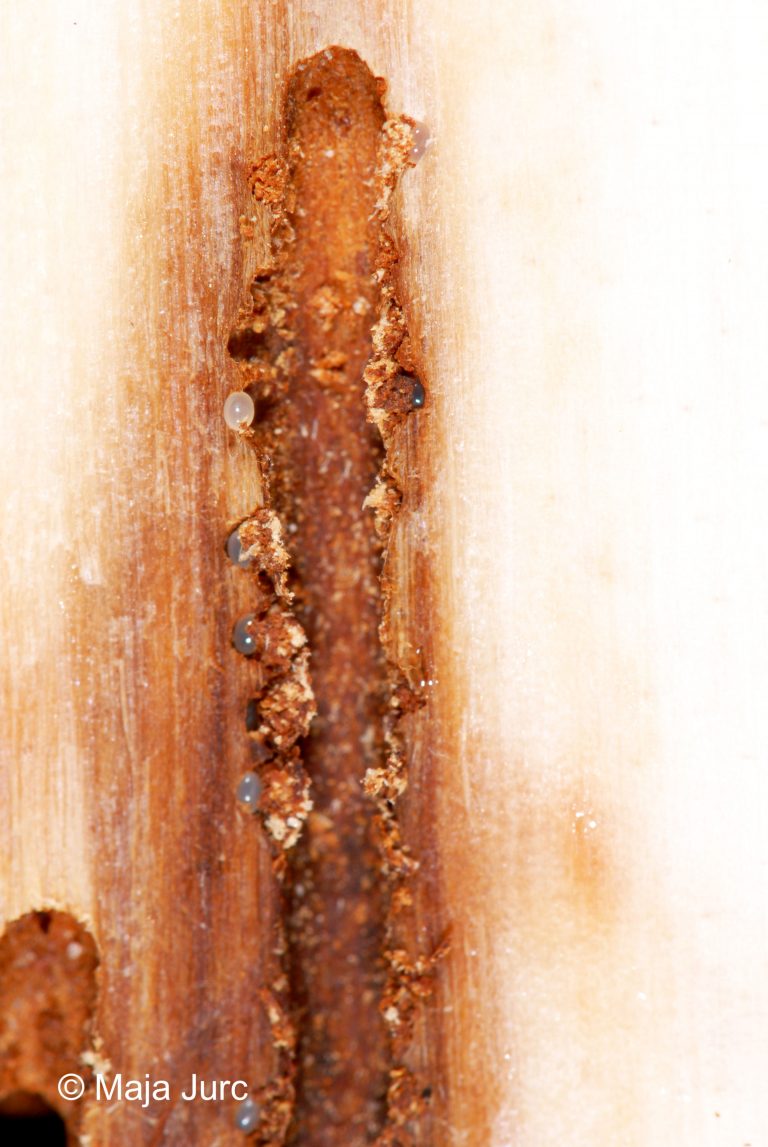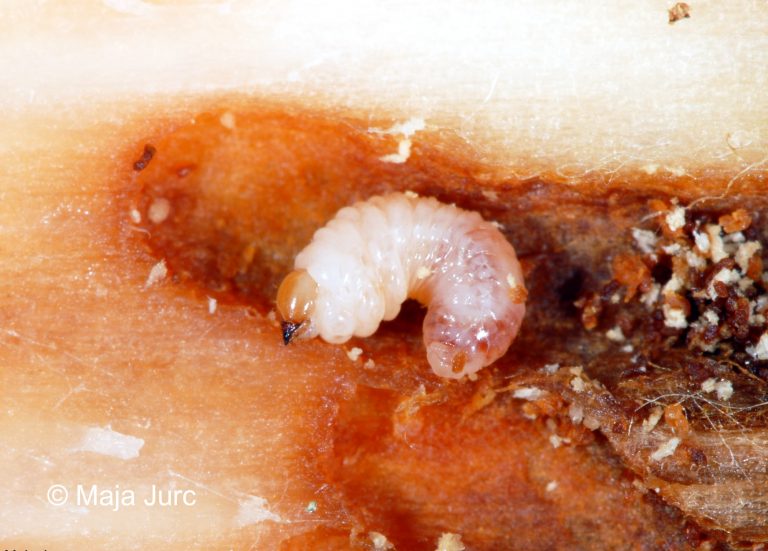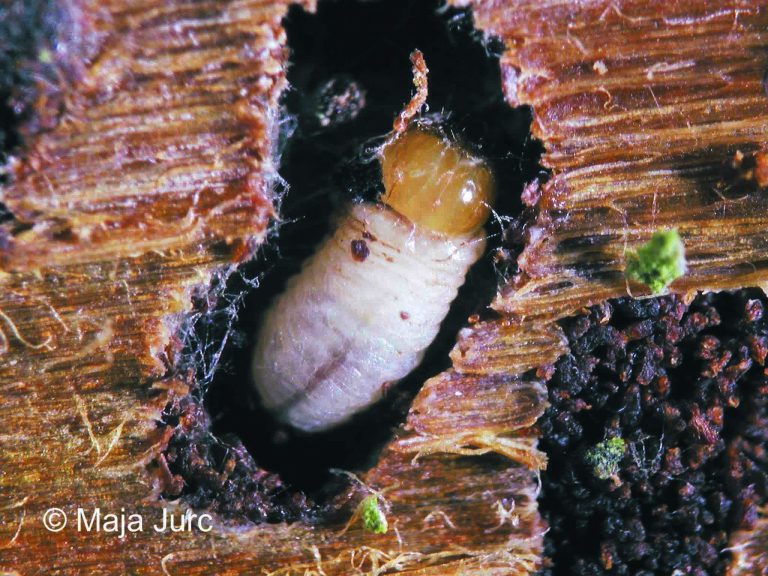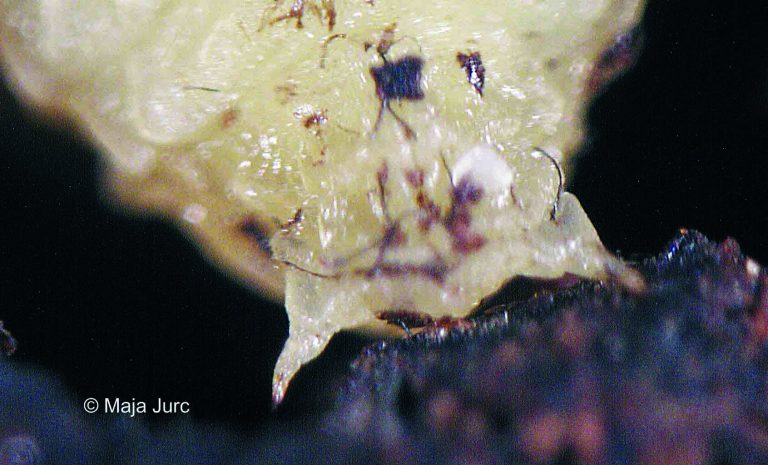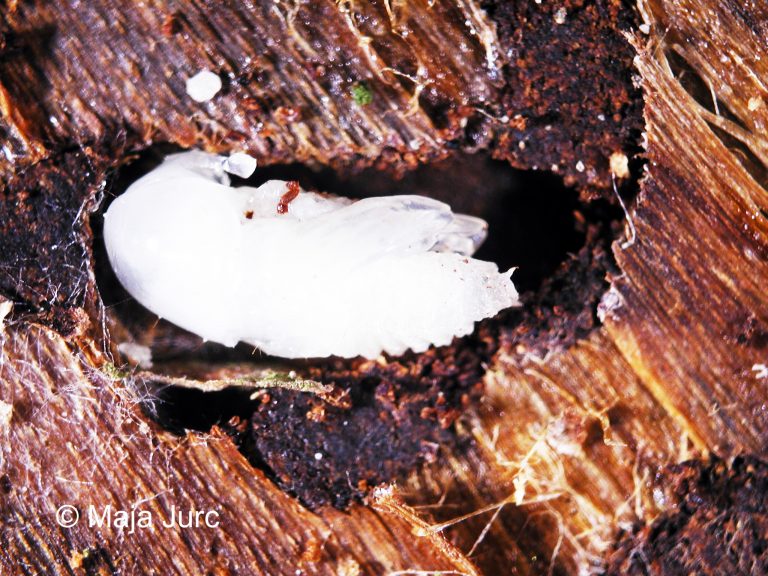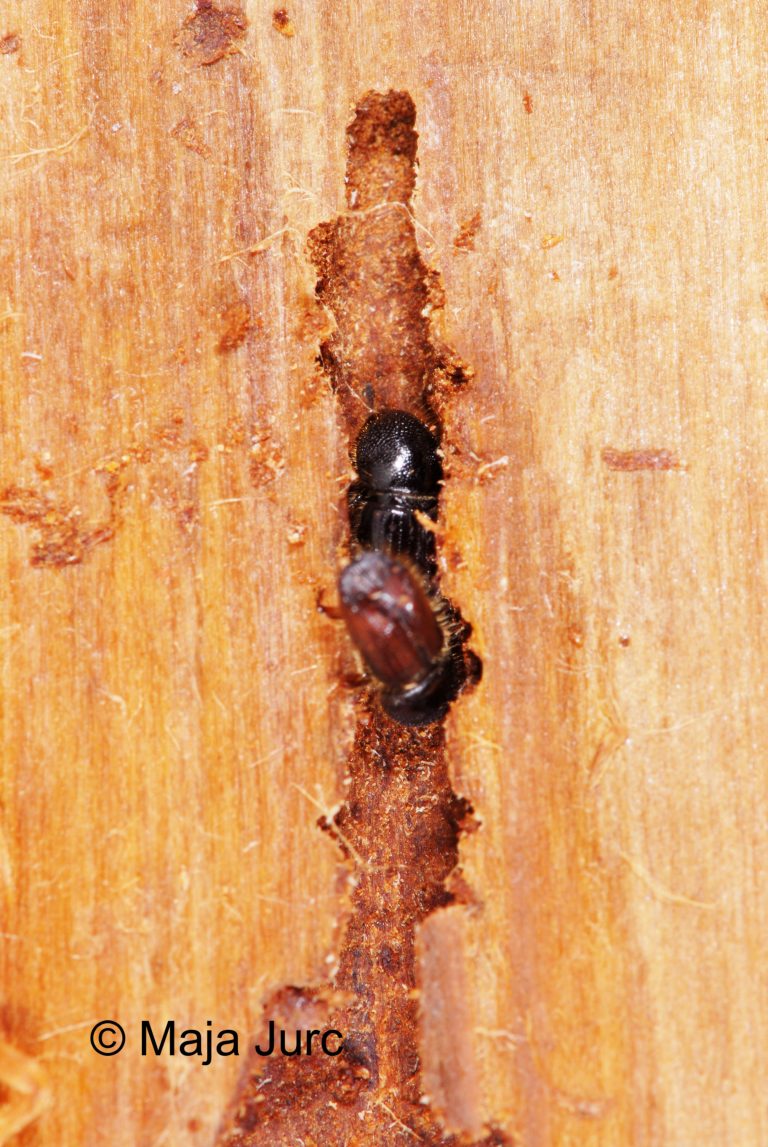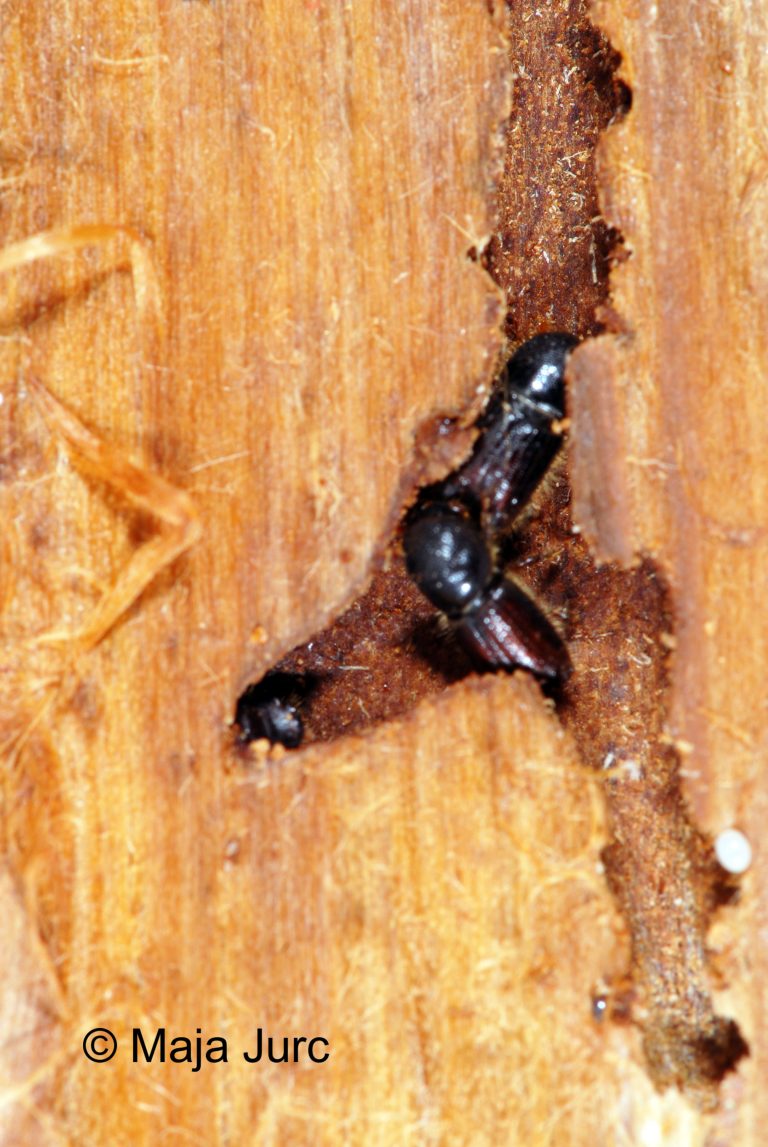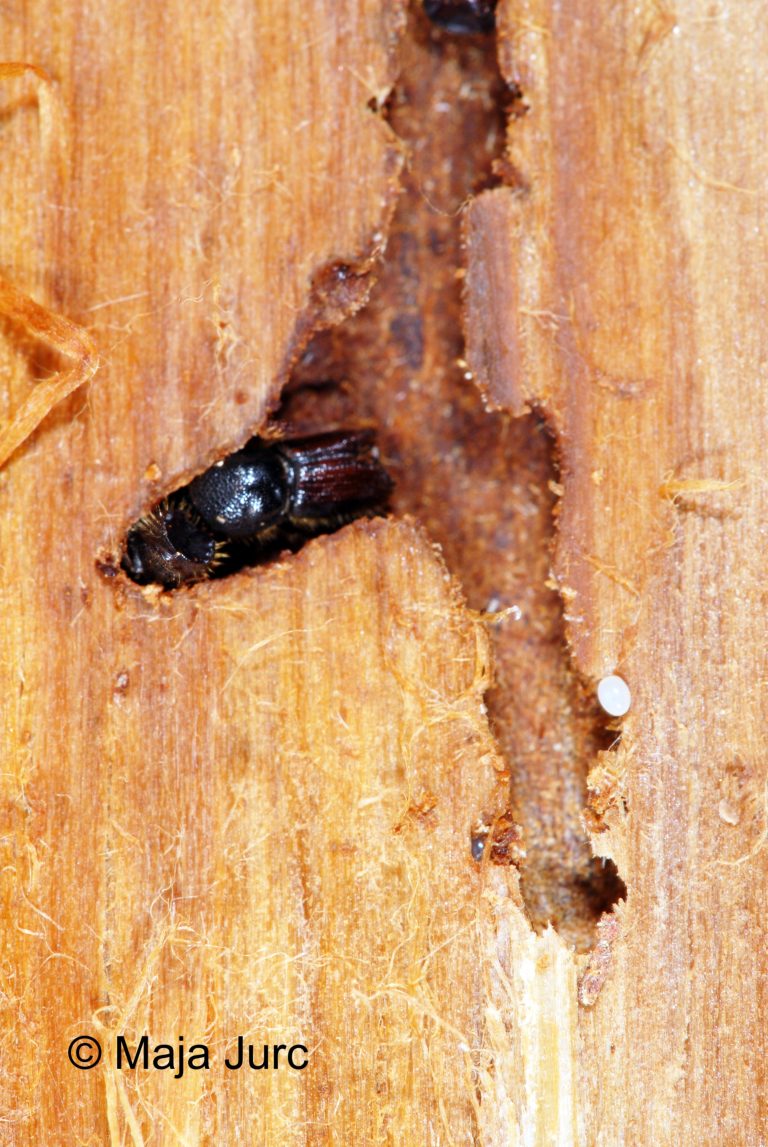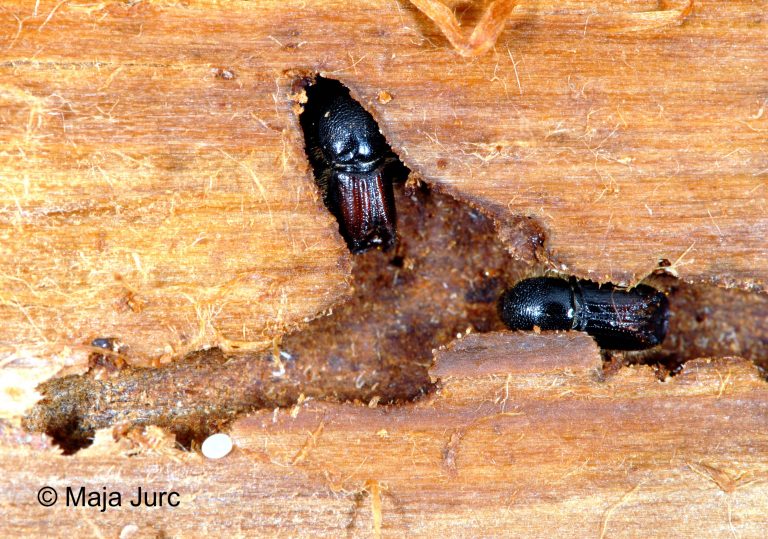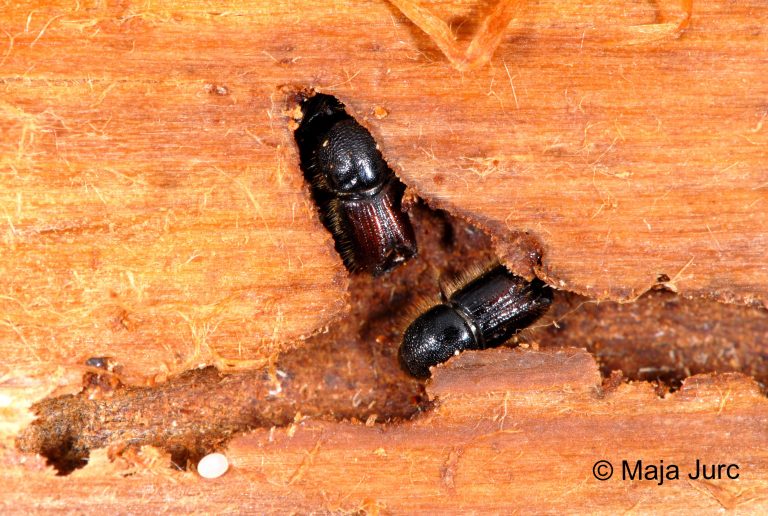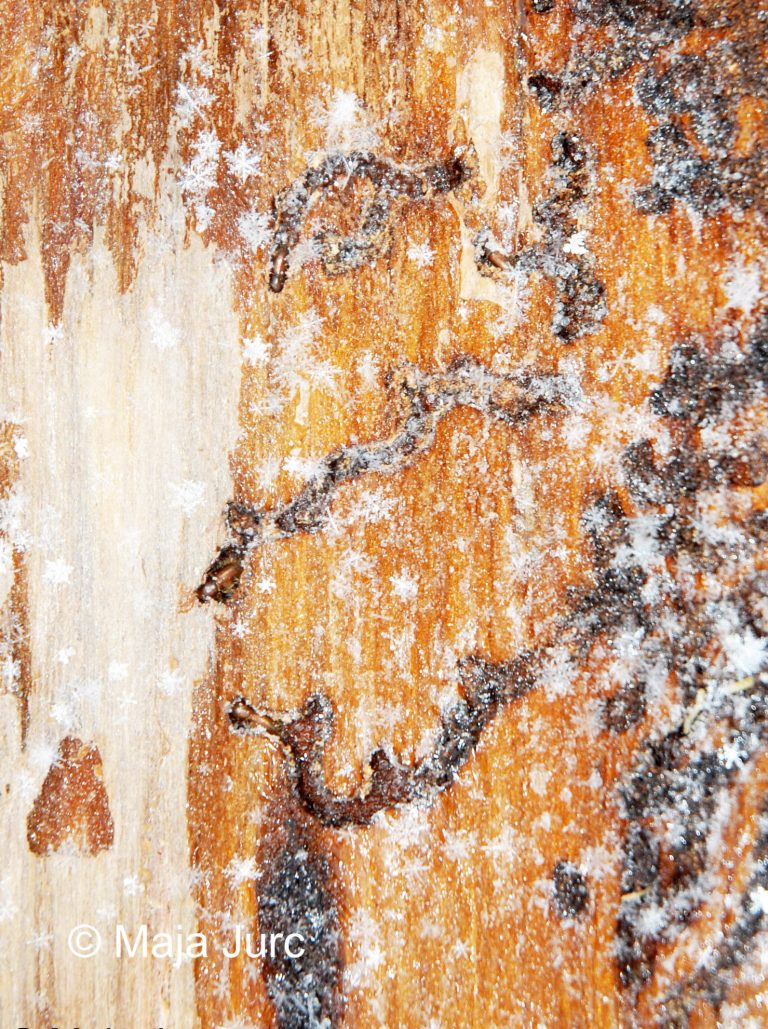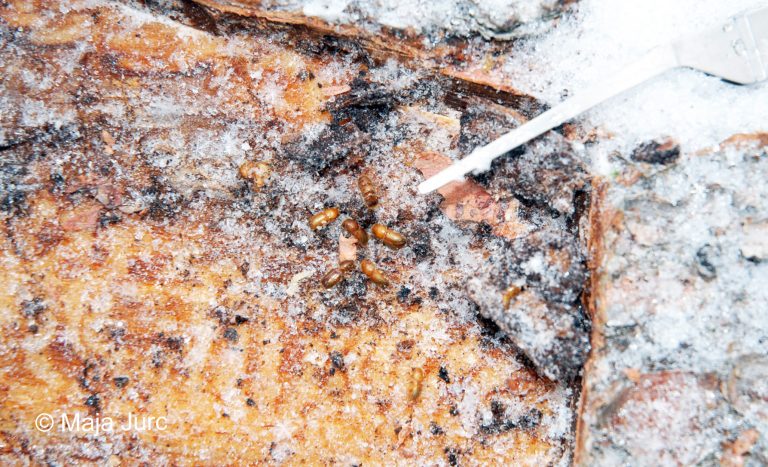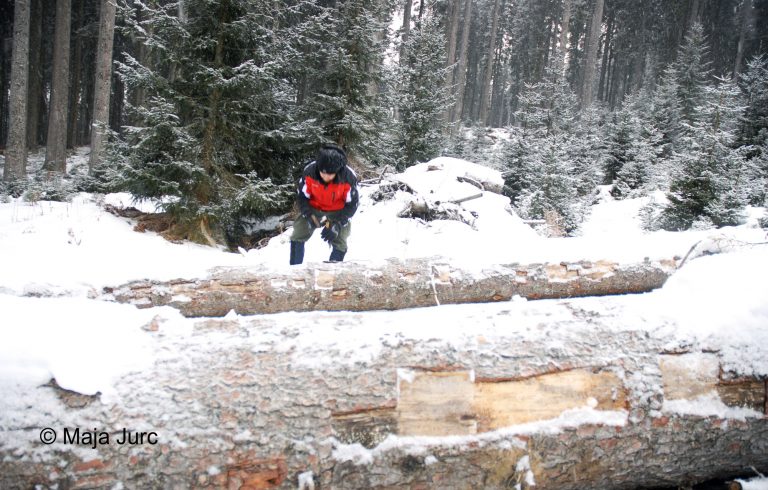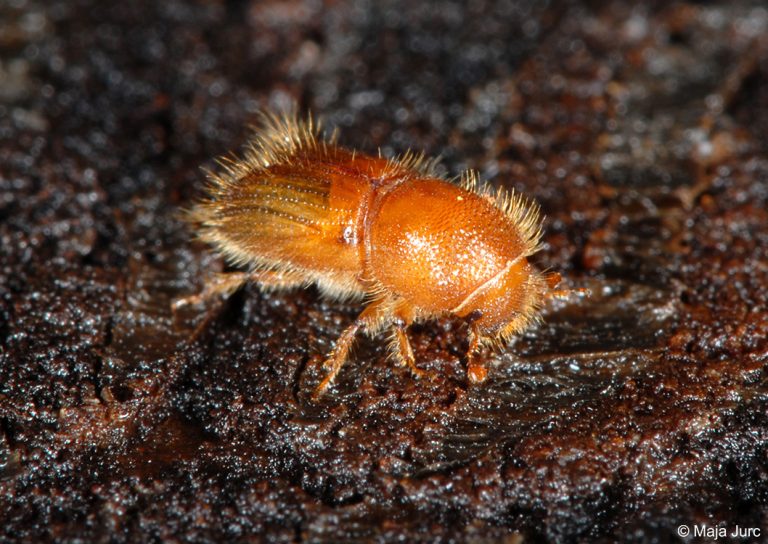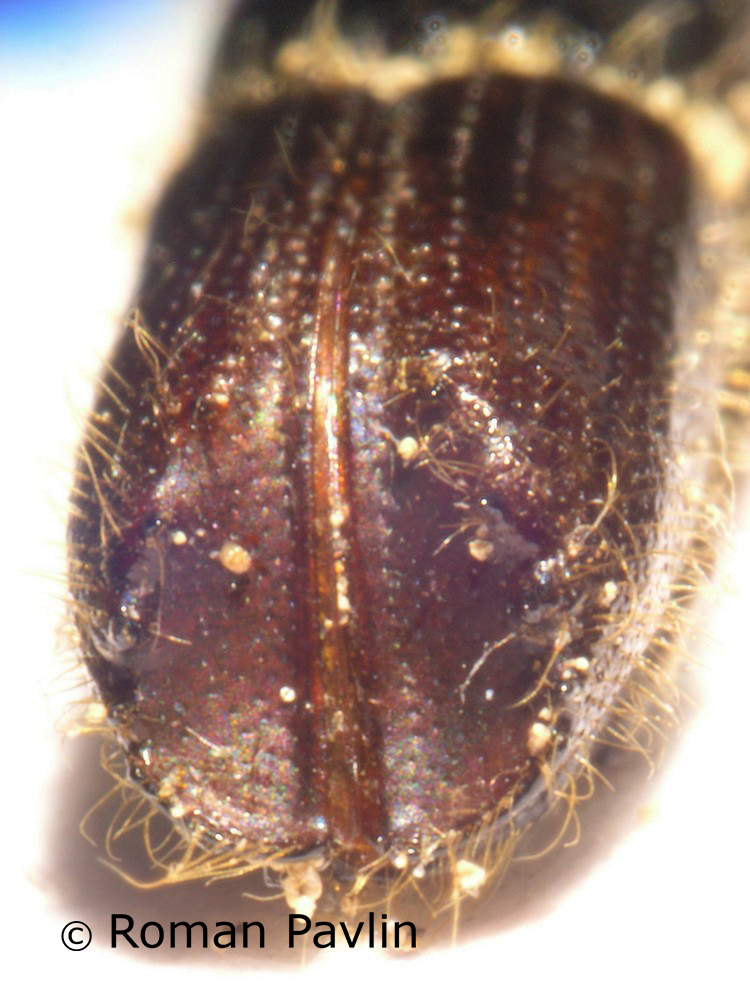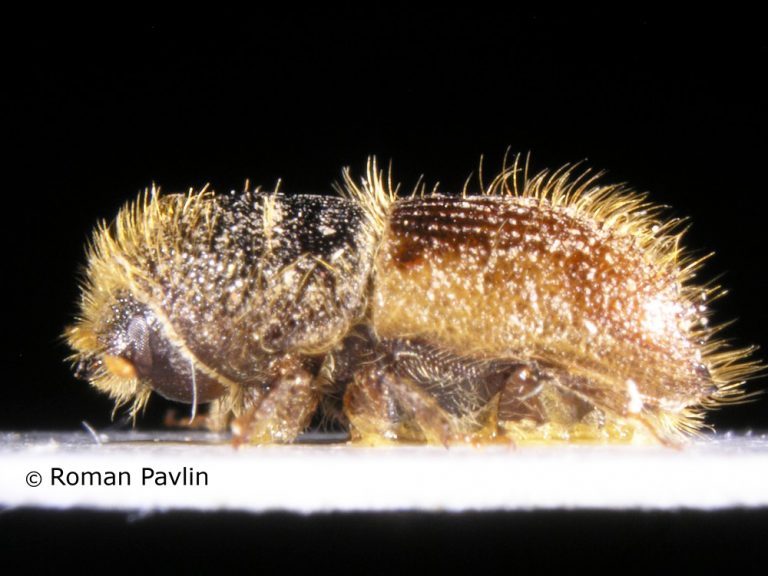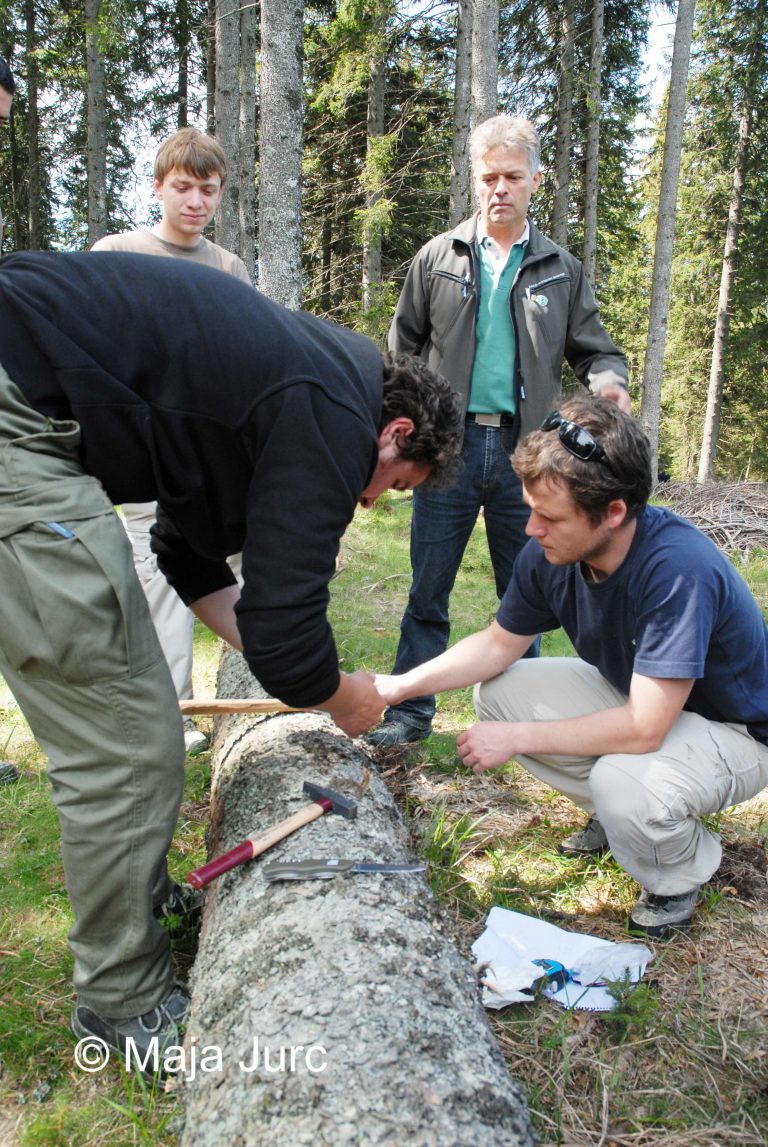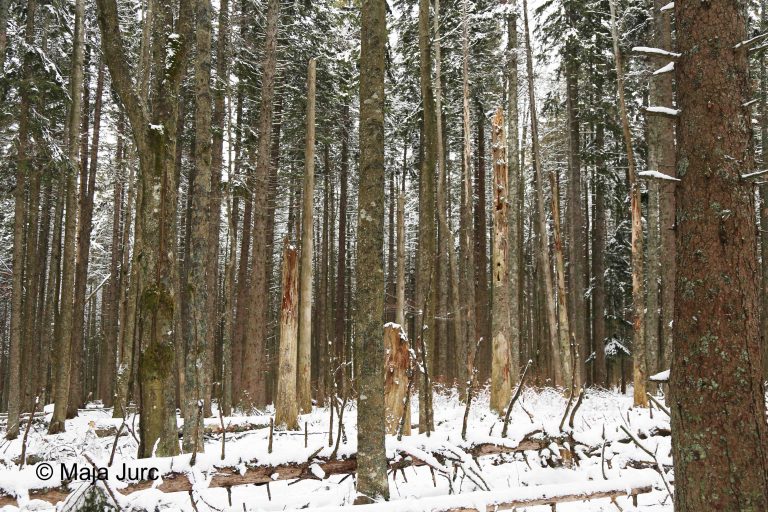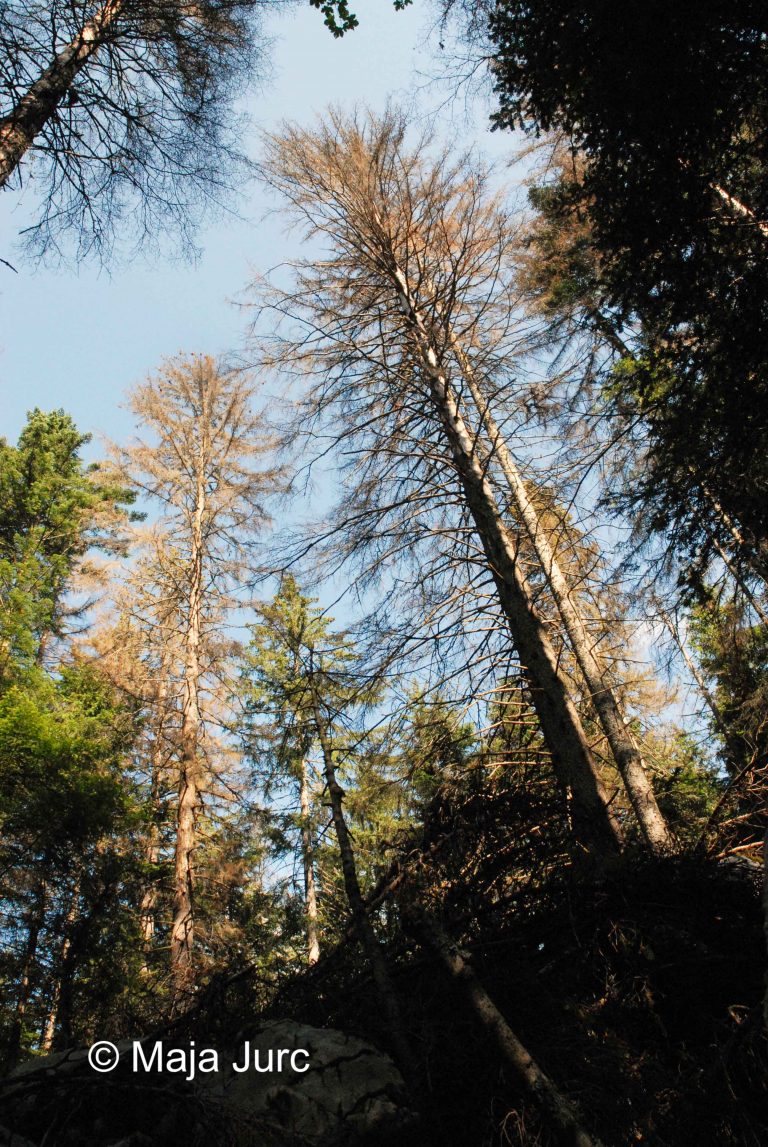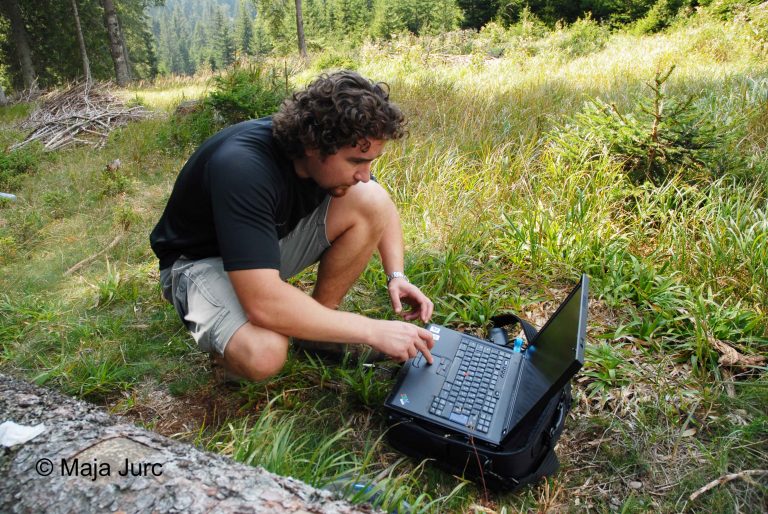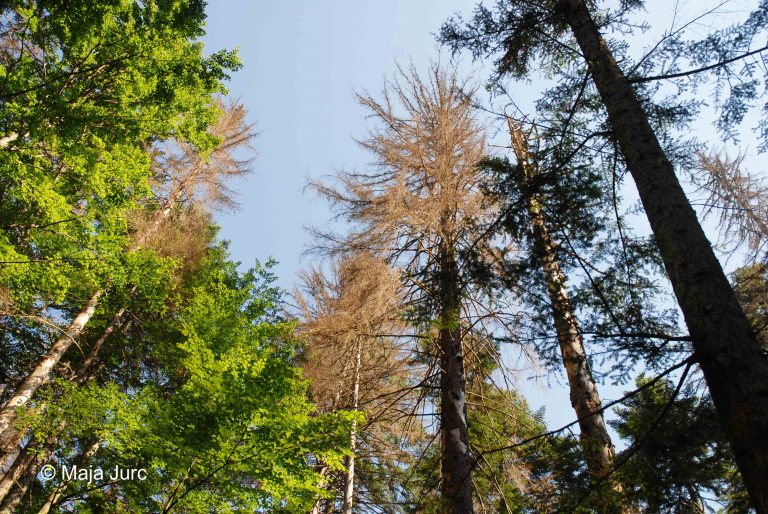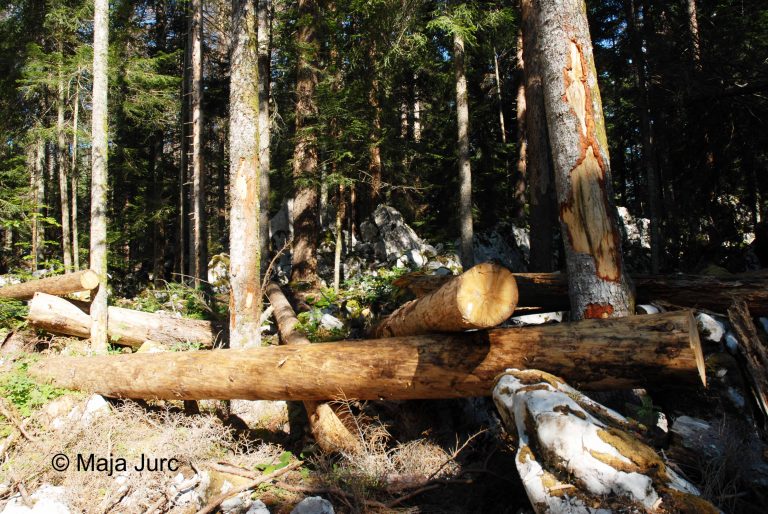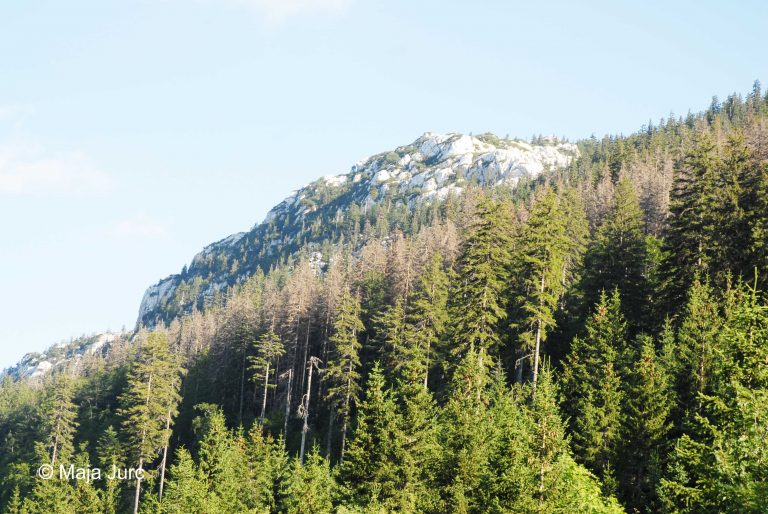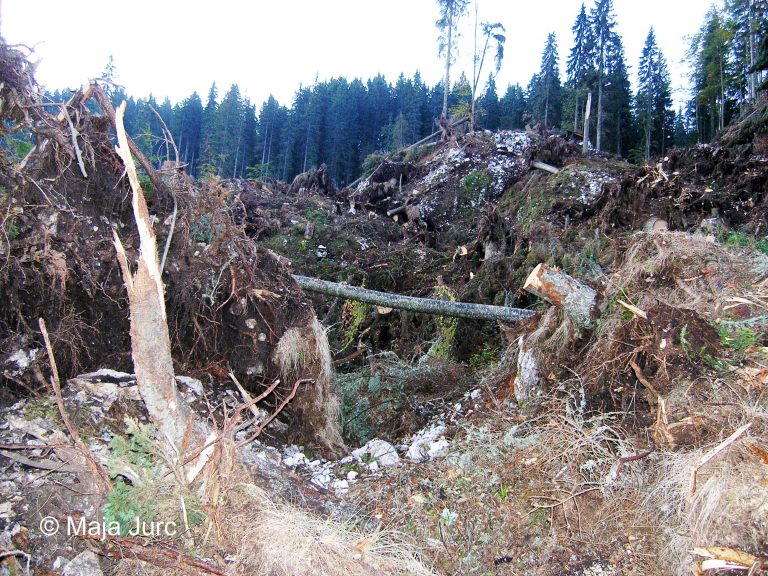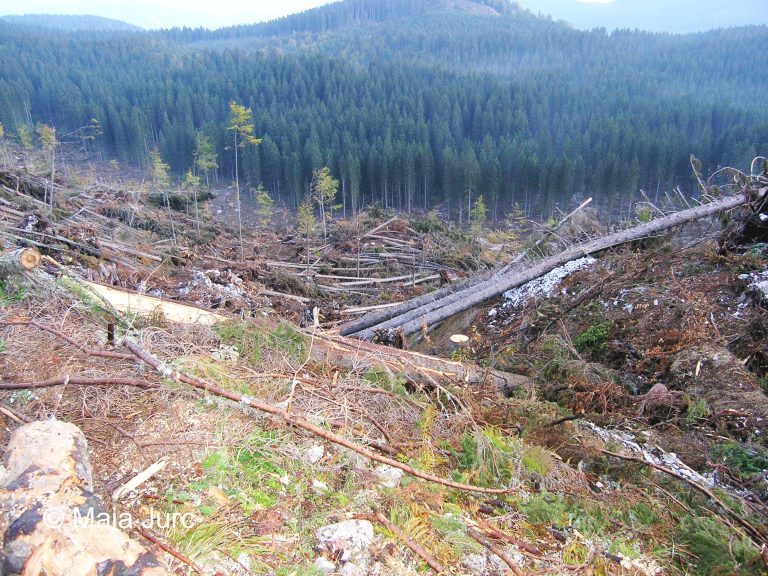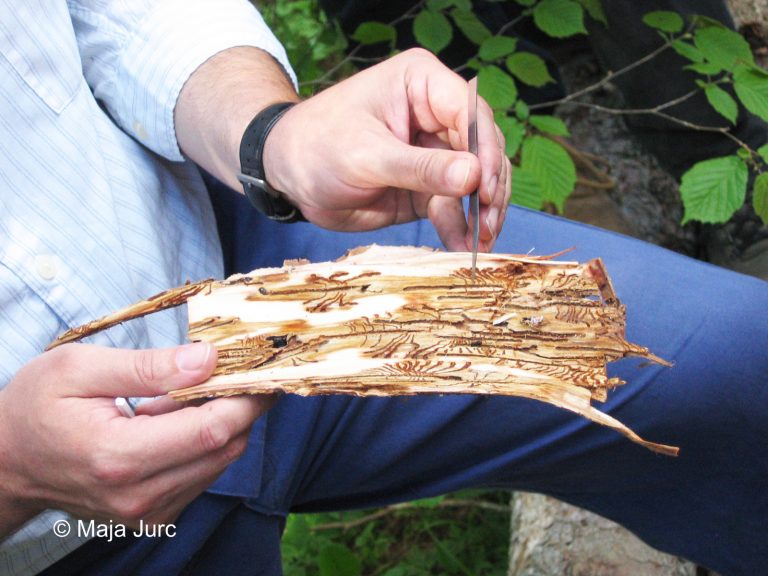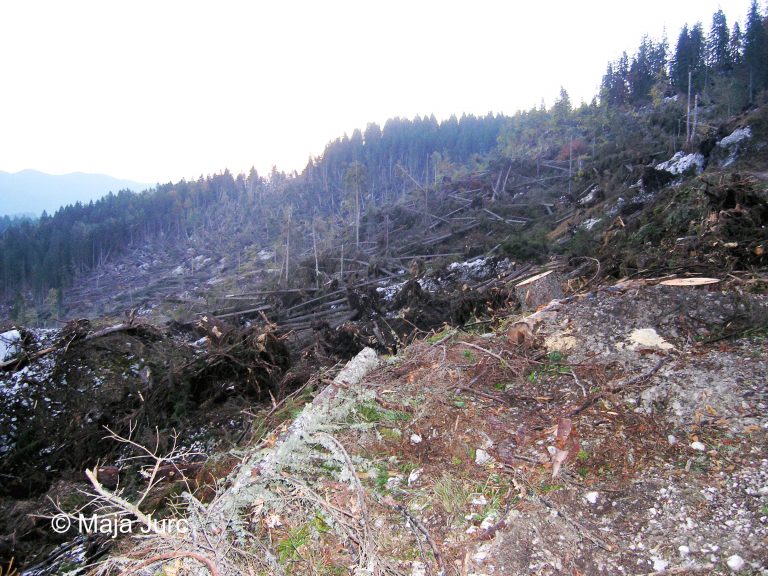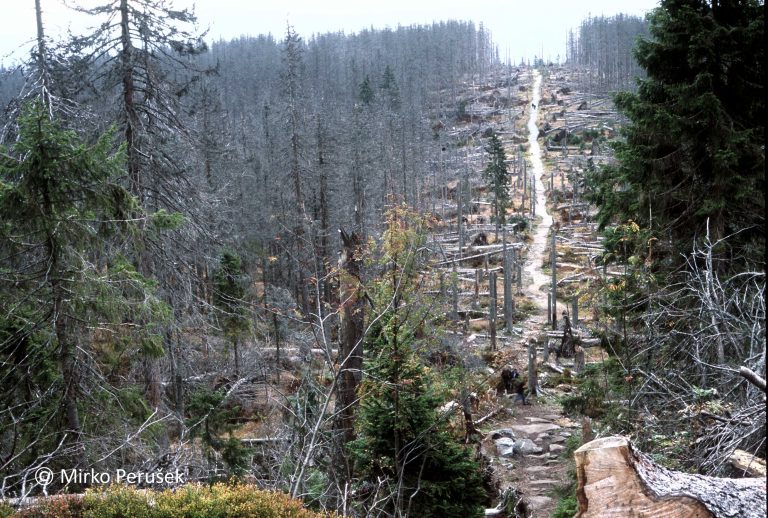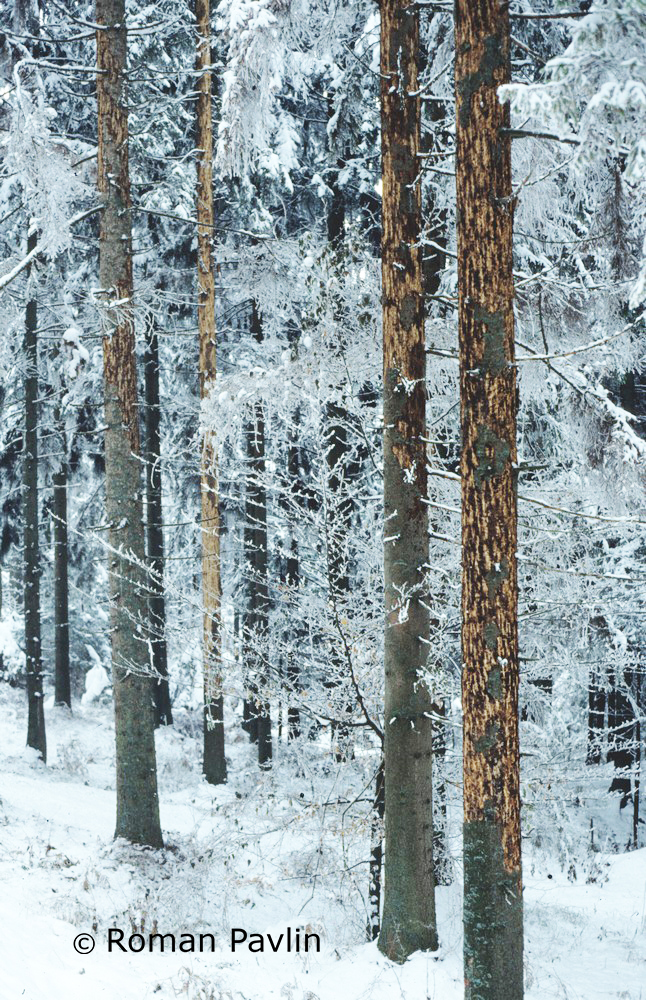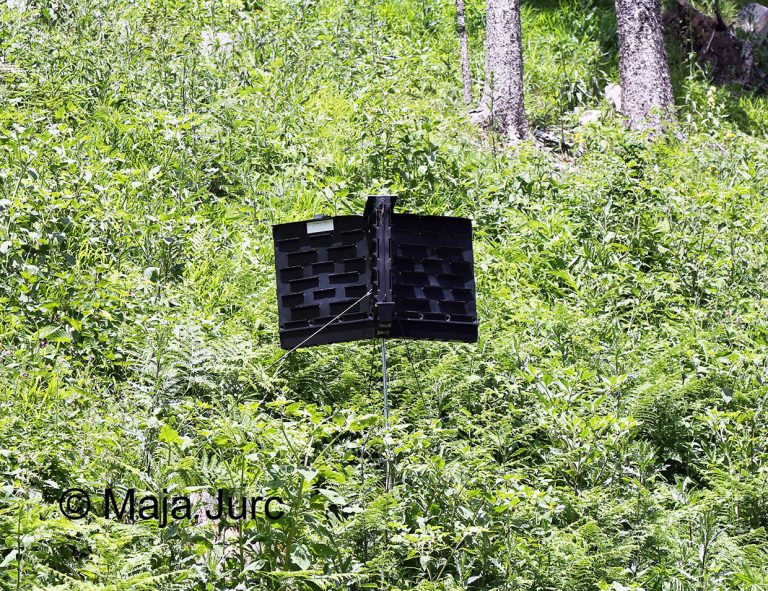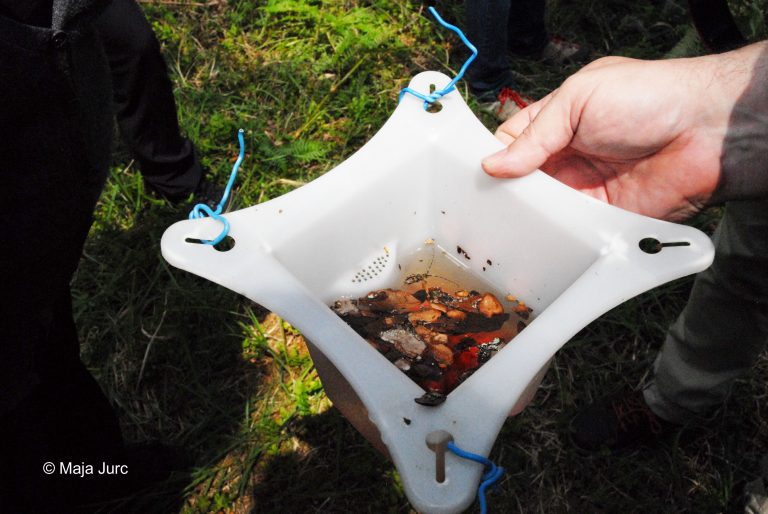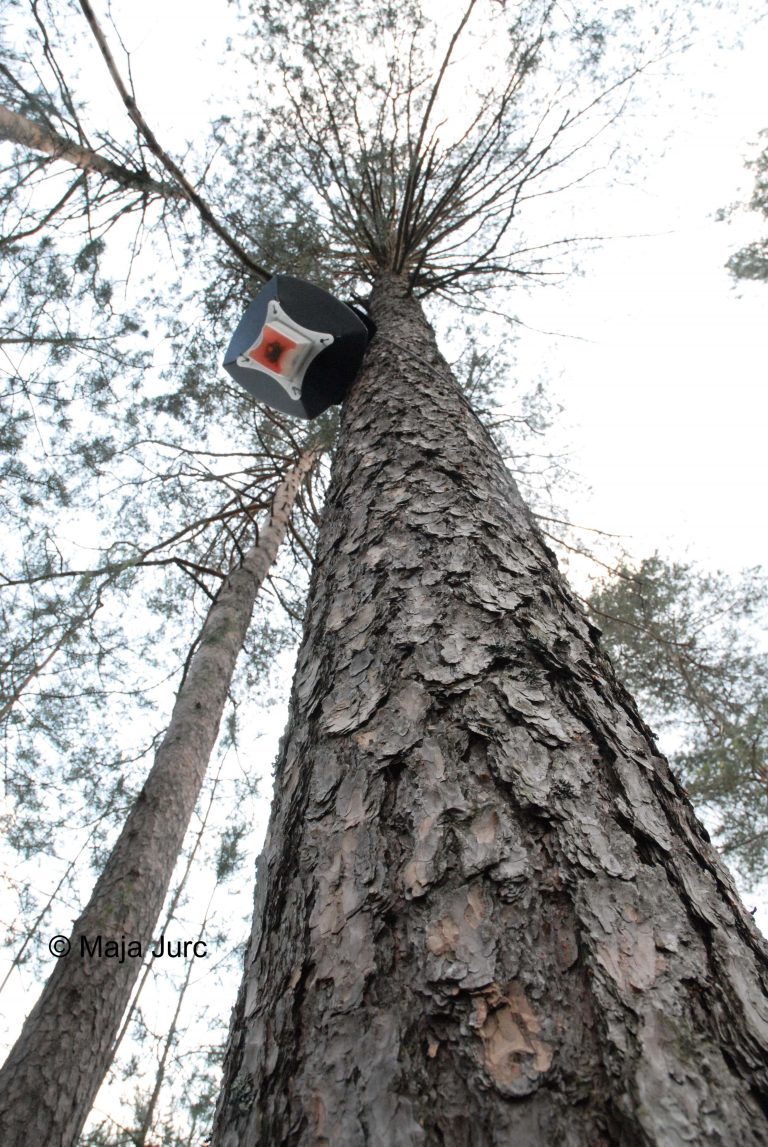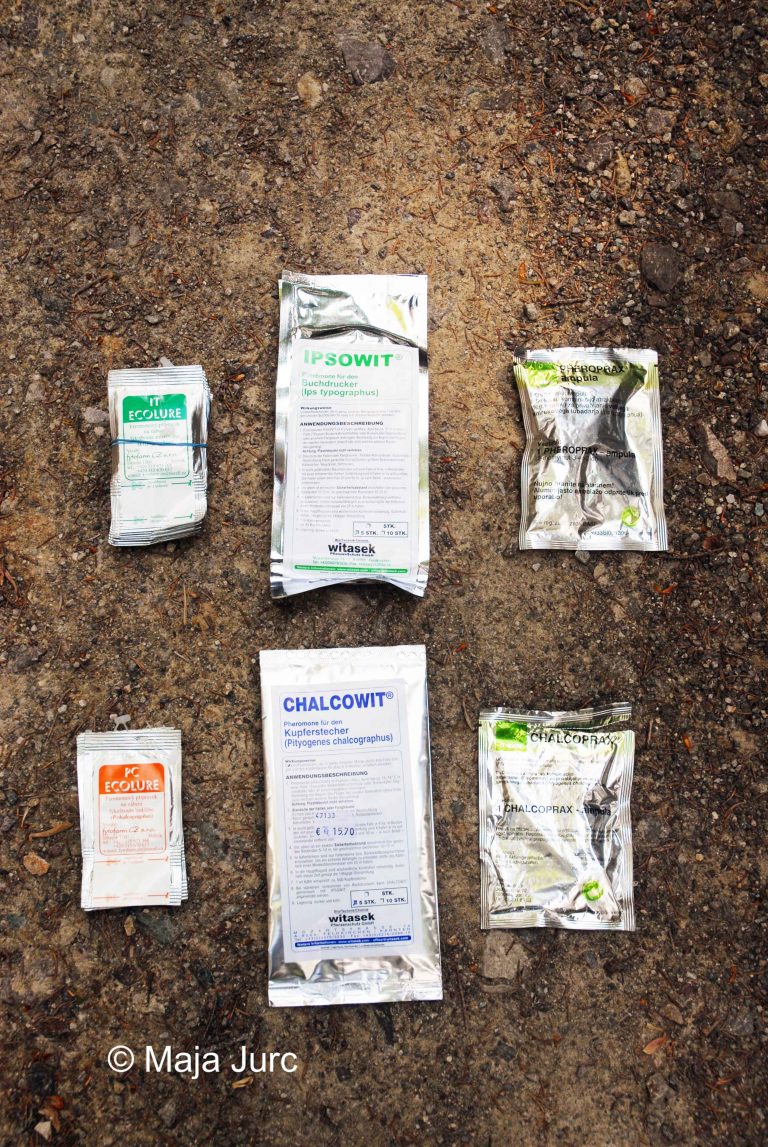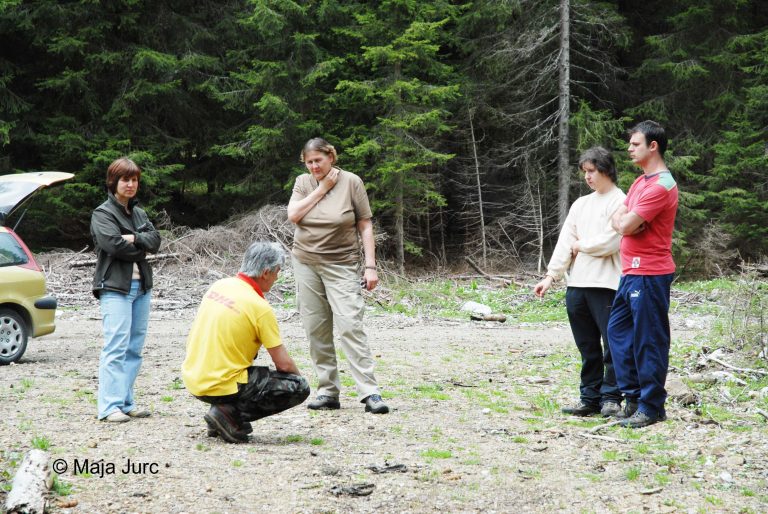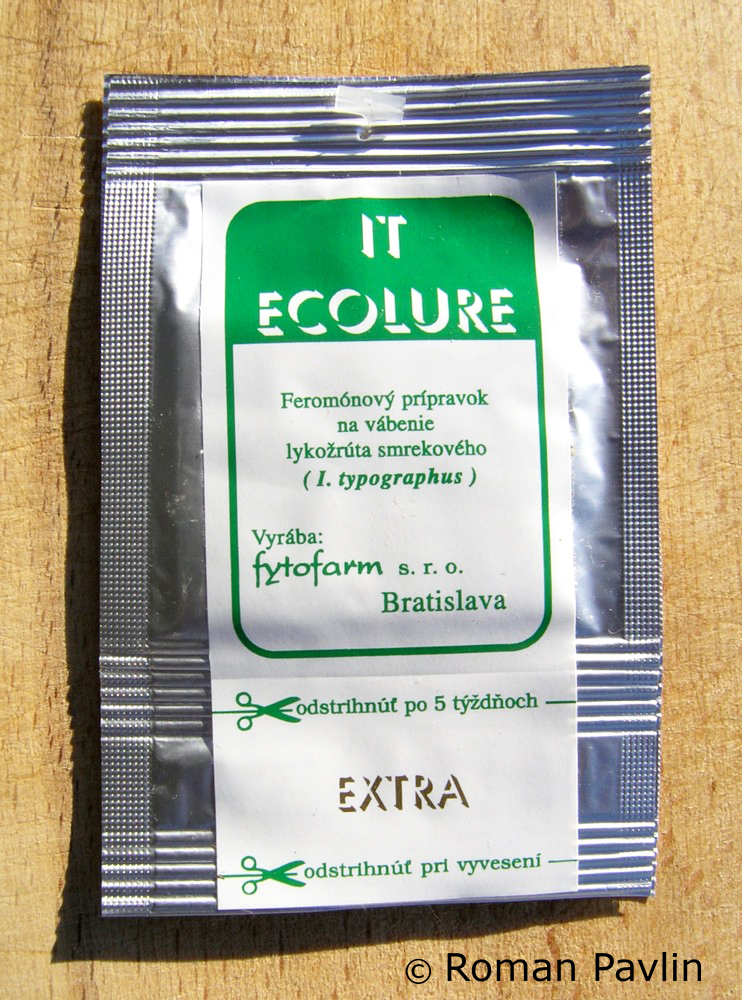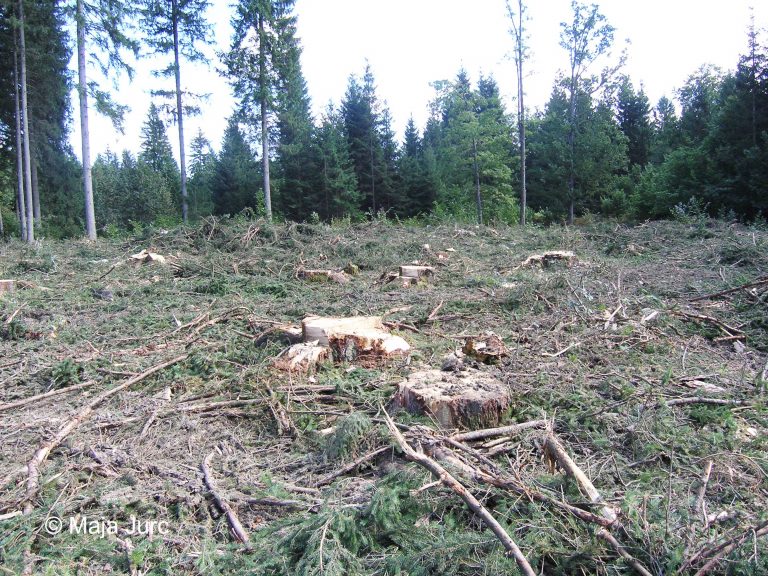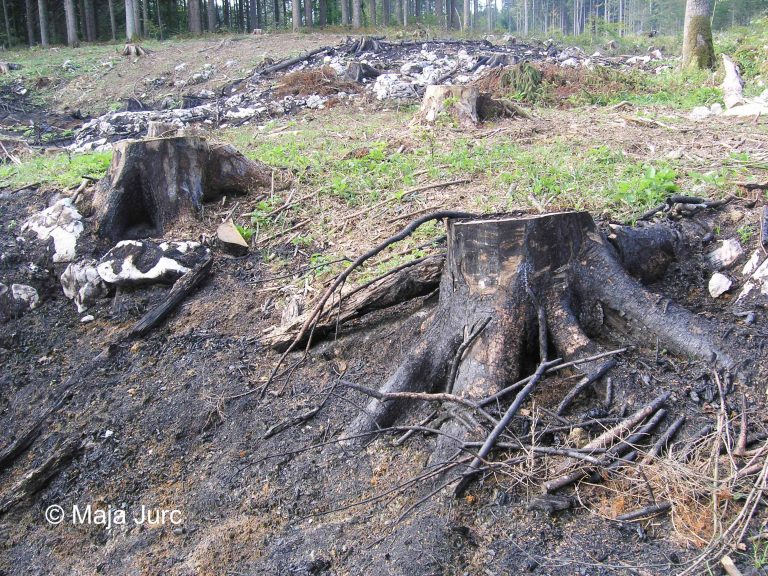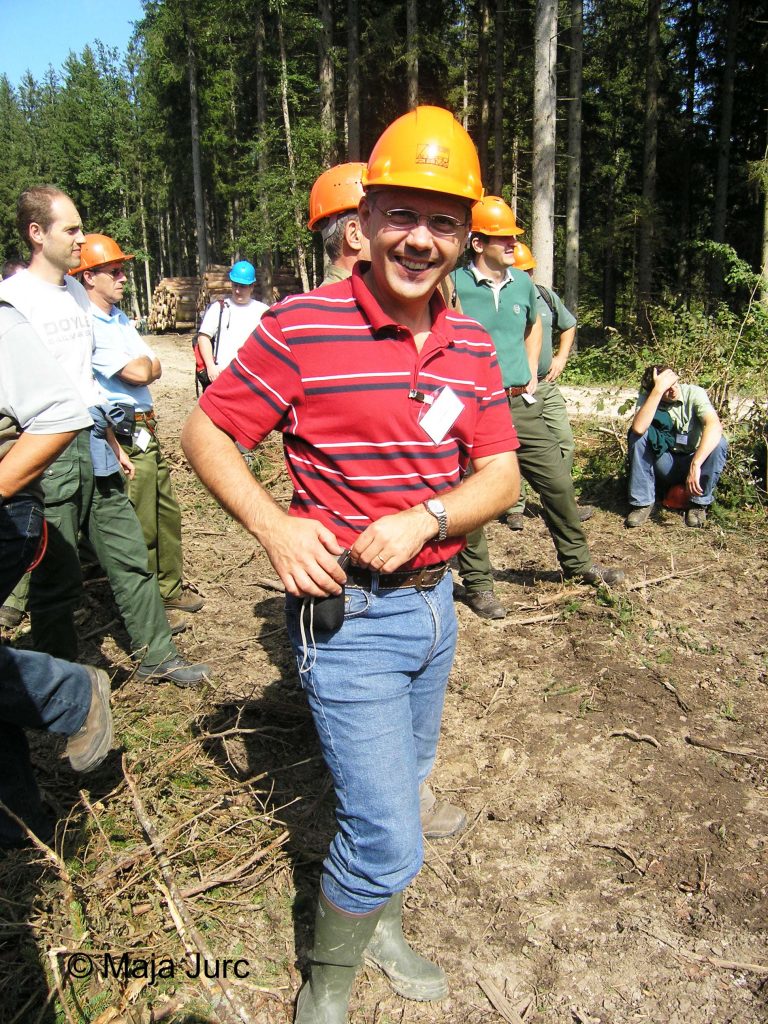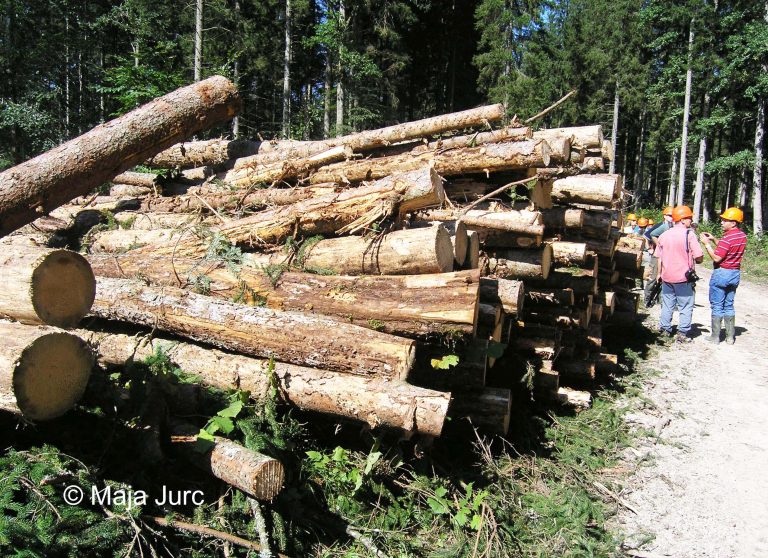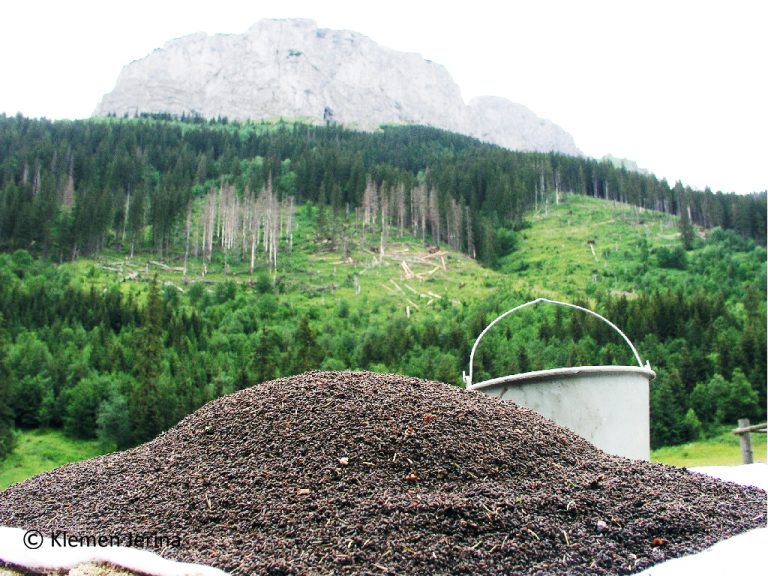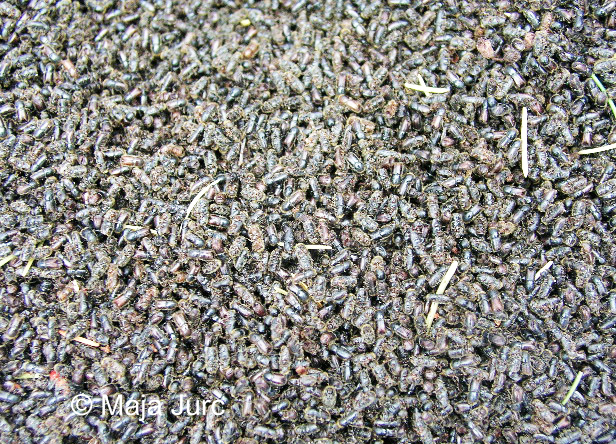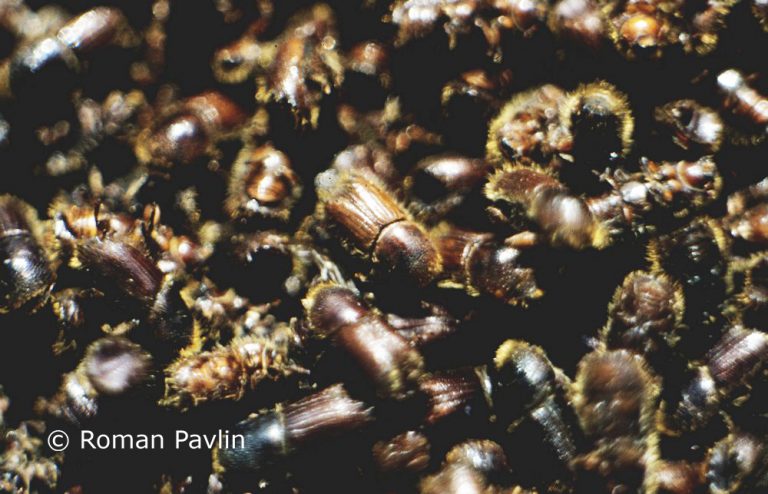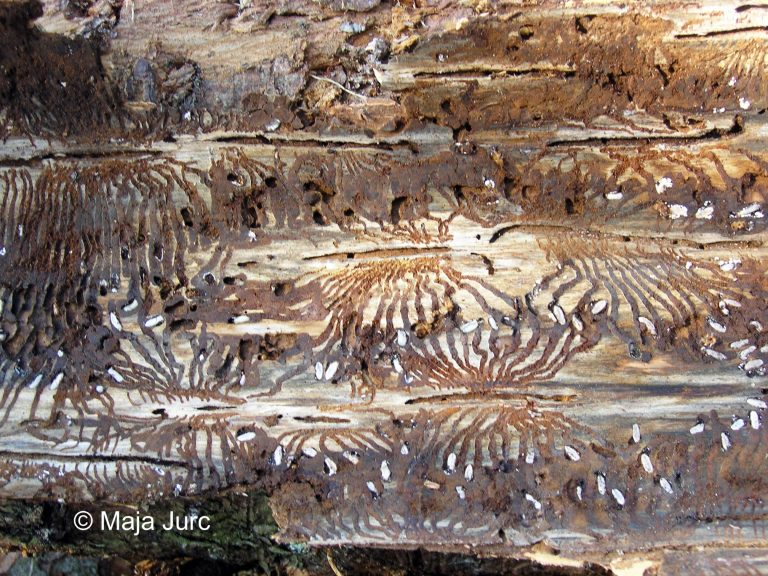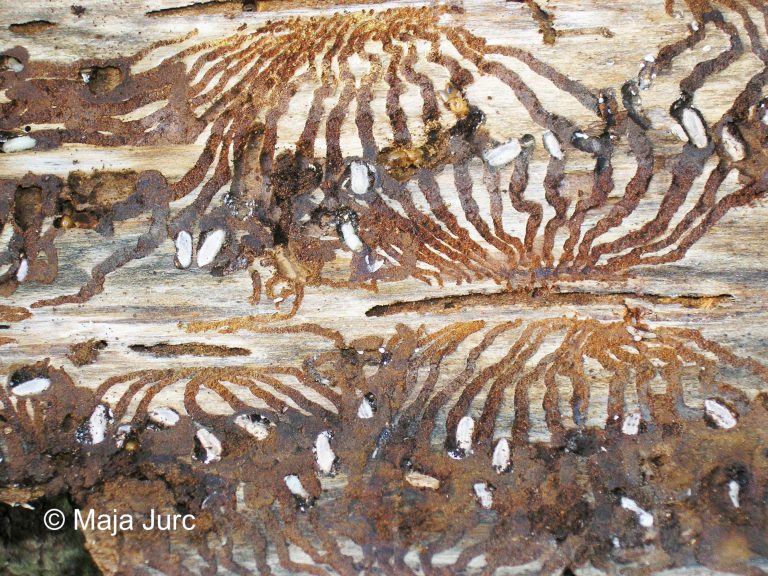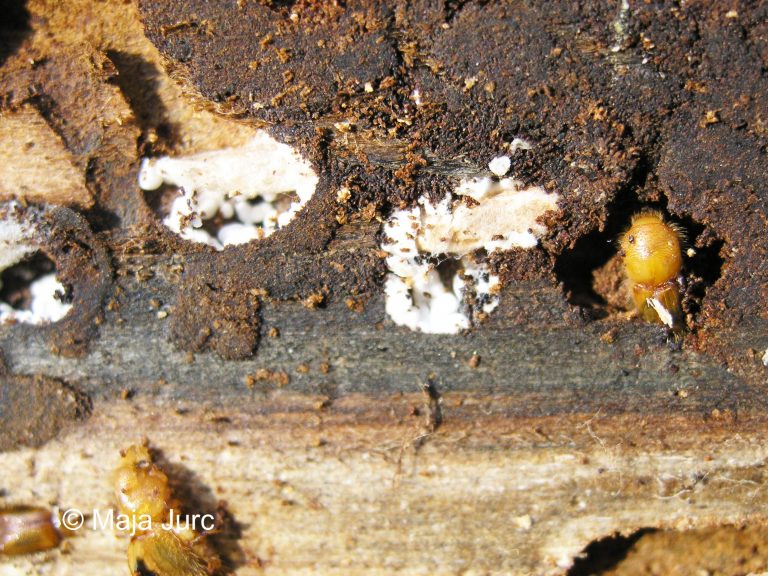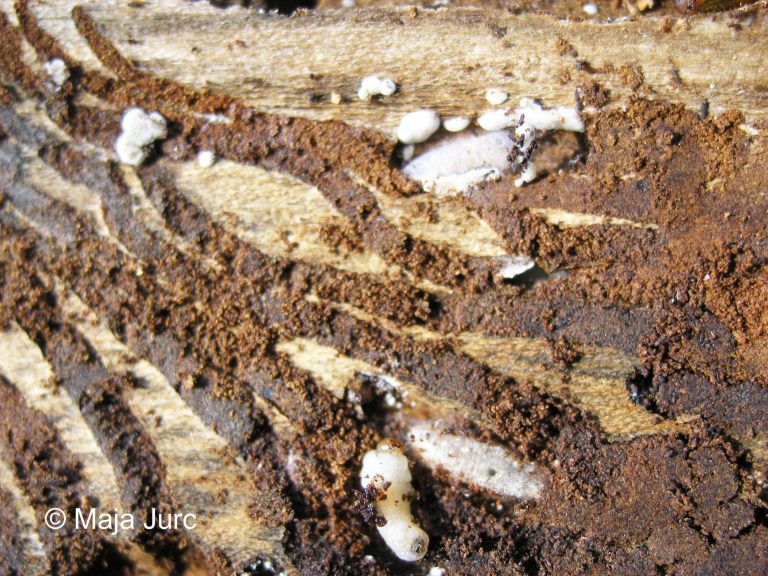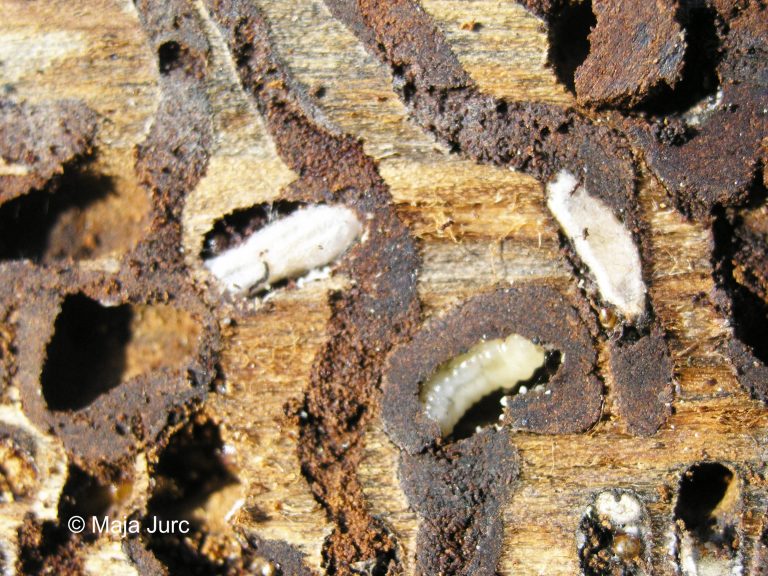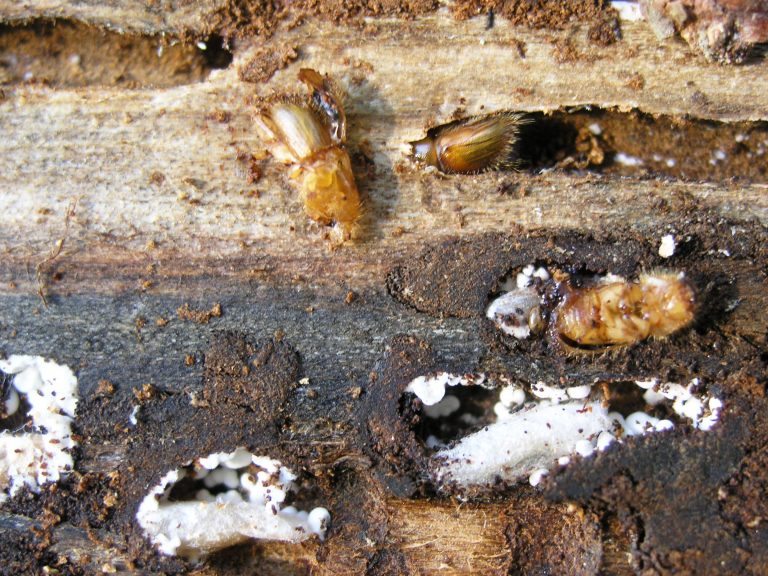28.06. Ips typographus (Linnaues, 1758)
Presence
E: AU BE BH BU BY CR CT CZ DE EN FI FR GB GE GR HU IC IR IT LA LS LT LU MD NR NT PL PT RO SK SL SP ST SV SZ UK YU
N: AG
A: ES FE GAN HEI HEN JA JIL KZ MG NC NMO QIN SC SCH SHA TR WS XIN
Figure 121: Ips typographus (above: male – lateral, dorsal, below: female – lateral, dorsal) (Foto: Maja Jurc)
Older catalogs and keys – citations of name
Siegel 1866: Bostrychus typographus Lin.; Grüne 1979: Ips typographus Linné, 1758; Freude, Harde, Lohse 1981: Ips typographus Linné; Titovšek 1988: Ips typographus (Linné); Pfeffer & Knížek 1993: I. typographus (Linnaues, 1758); Pfeffer 1995: Ips typographus (Linné, 1758).
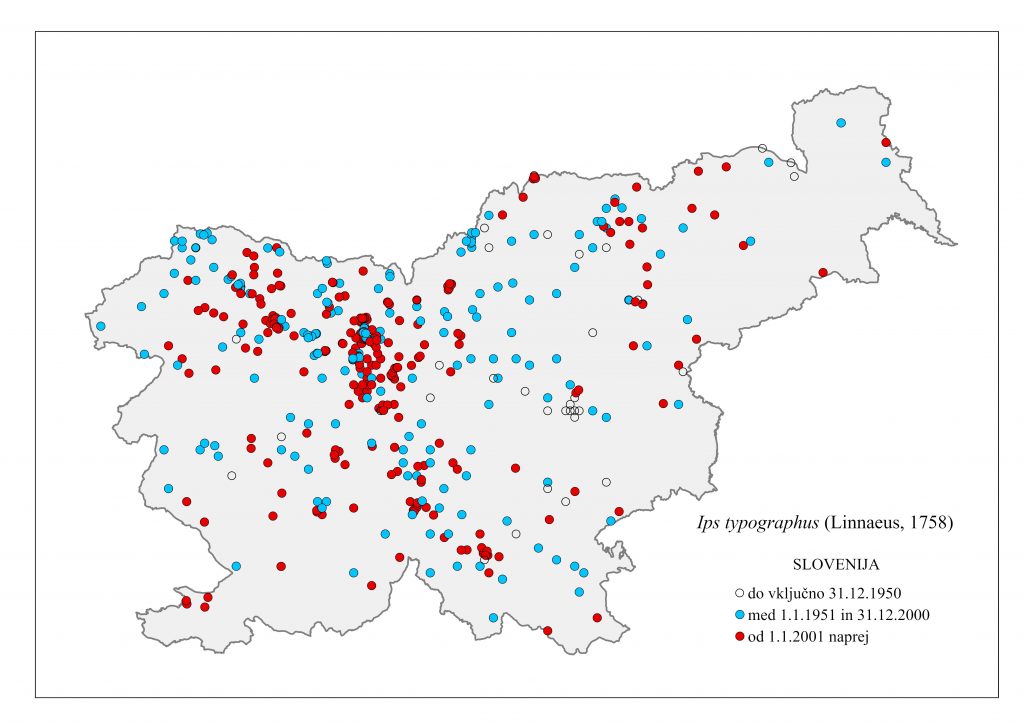
Figure 122: Ips typographus, distribution map according to historical and recent data
Ecology and presence in Slovenia
The species is distributed in the range of the Norway spruce (Picea abies) in central Europe, northern Europe, Bosnia, Serbia, Bulgaria, the Caucasus and Siberia. It is common throughout Slovenia, from the colline to the Alpine zone (Figure 122). Hosts: Picea abies, P. obovata, P. omorica, P. jezoensis, Pinus sylvestris, P. strobus, P. sibirica, P. koraiensis and Abies sibirica, rarely Larix spp., Pseudotsuga spp., Pinus nigra and Abies alba. In Slovenia, the host is almost always P. abies, rarely also P. sylvestris and A. alba. It develops 2-3 generations per year. It builds longitudinally oriented, most often 2-3-limbed straight tunnel systems. Adult size is 4.2-5.5 mm. Both sexes have 4 teeth on each side of the elytrl apex, approximately equidistant, the third of which is the largest and button-shaped. The stitching on the tip of the antenna is in a gentle arc (Figure 121). Floemophagous secondary species, often occurring in gradations in favourable trophic and weather conditions. Very common in mature spruce-dominated stands, where it can causes considerable economic damage. Given the disrupted relationship between developmental stages, the large areas of forest overgrown with spruce and climate change, its bright future in Slovenia is assured. The species is a primary saproxylic. Like other bark beetles, it has many natural enemies: bacteria, fungi, nematodes, protozoa, mites, insects and birds. Its management in managed forests is successful only if preventive, prophylactic and curative measures are implemented consistently. Pheromones: 2-Methyl-3-buten-2-ol, [S]-cis-Verbenol, Ipsdienol; (Ipsenol, trans-Verbenol) (Bakke 1970, Bakke s sod. 1977).

